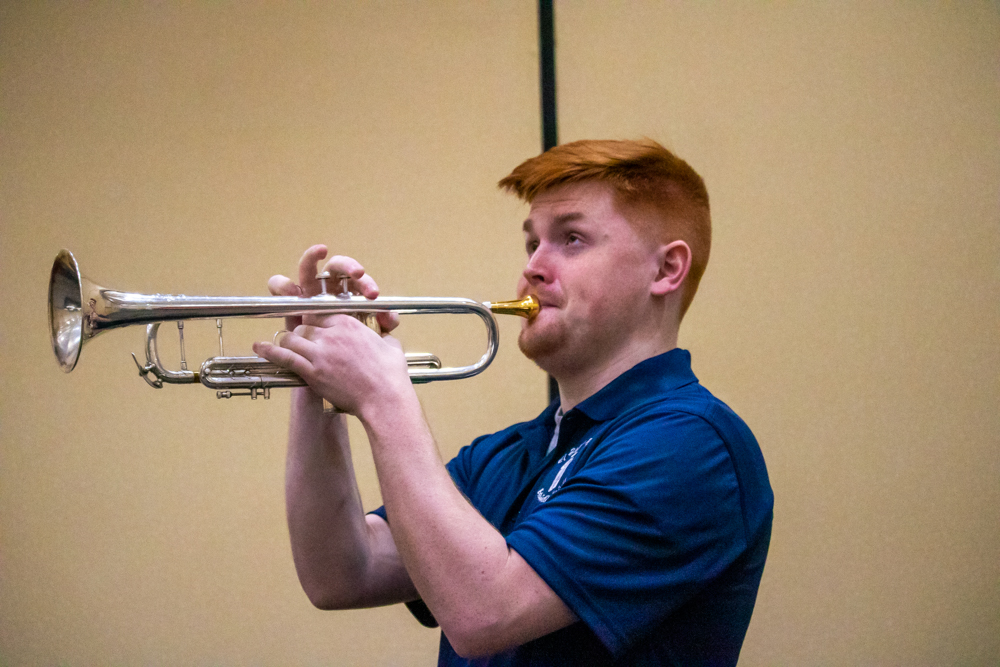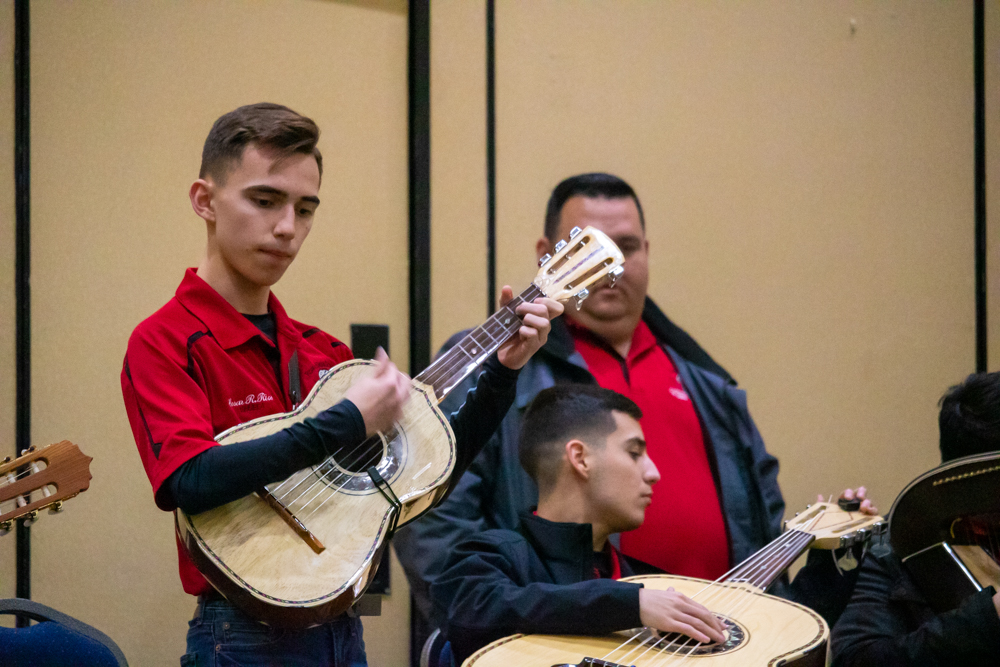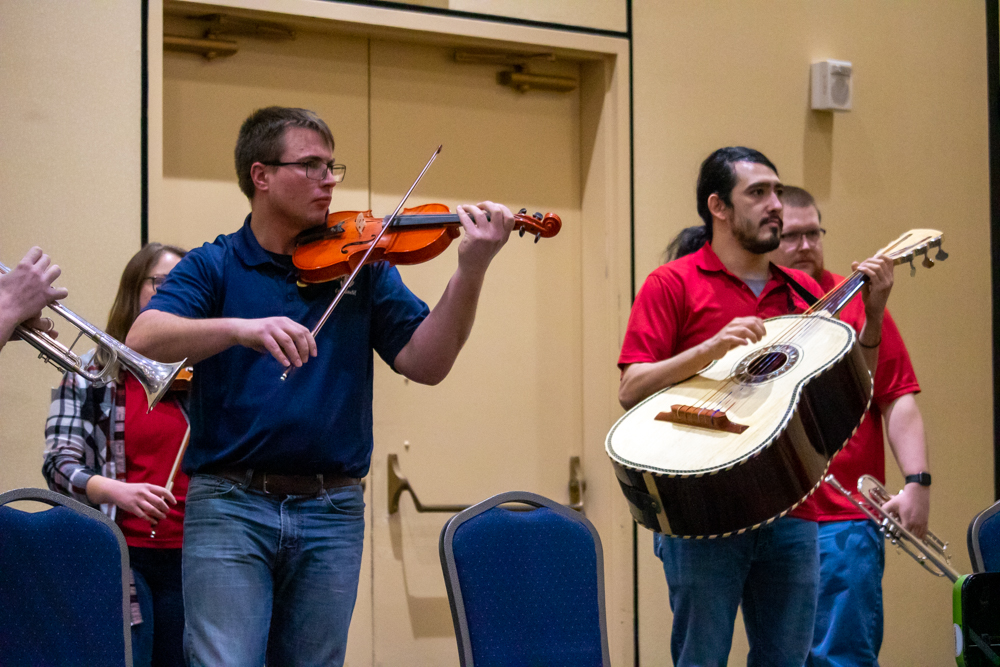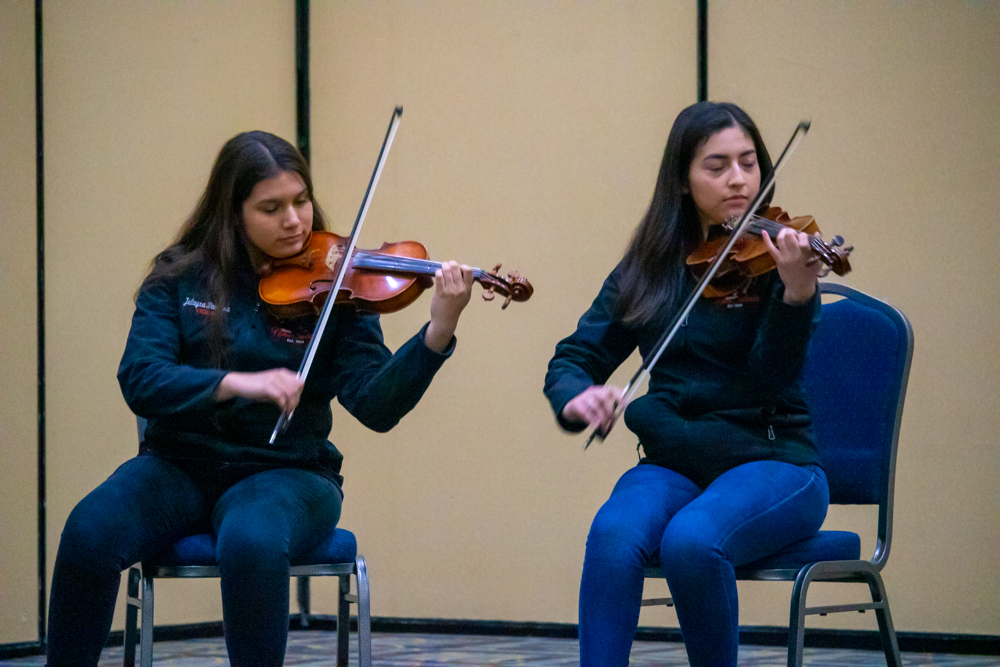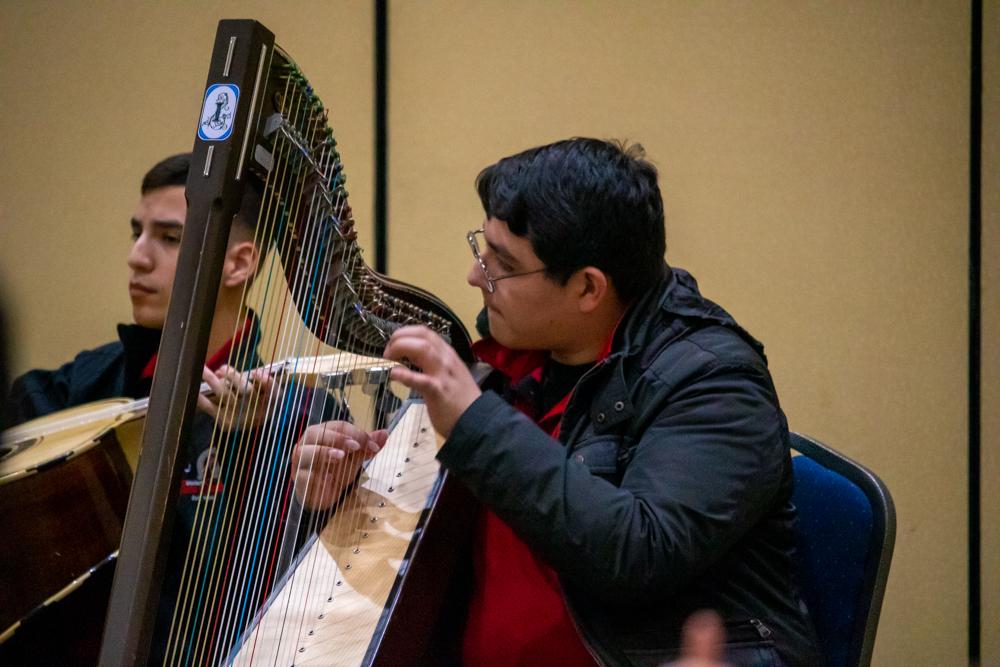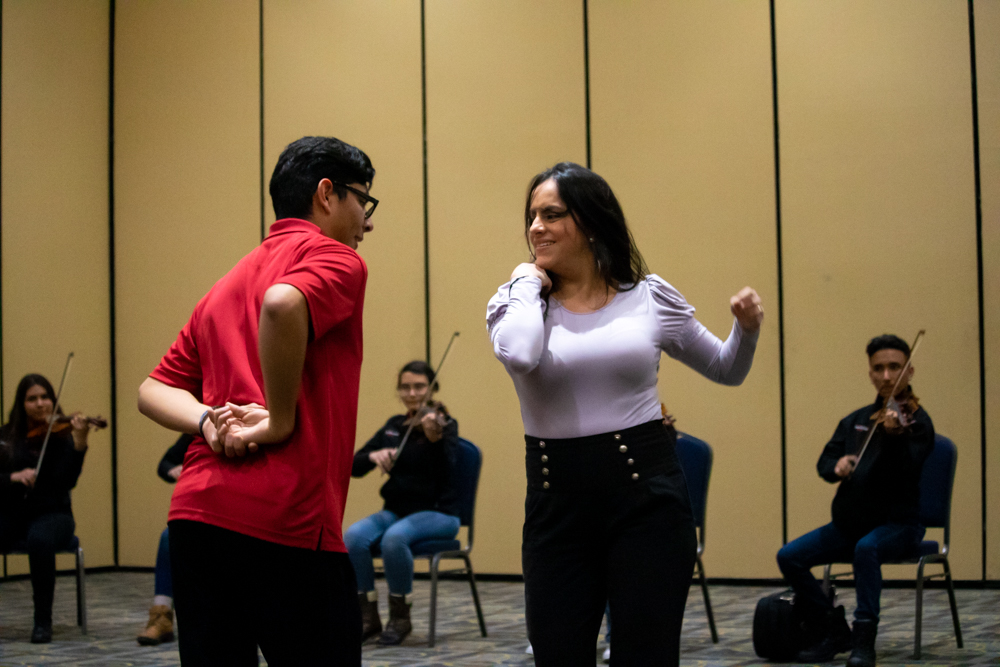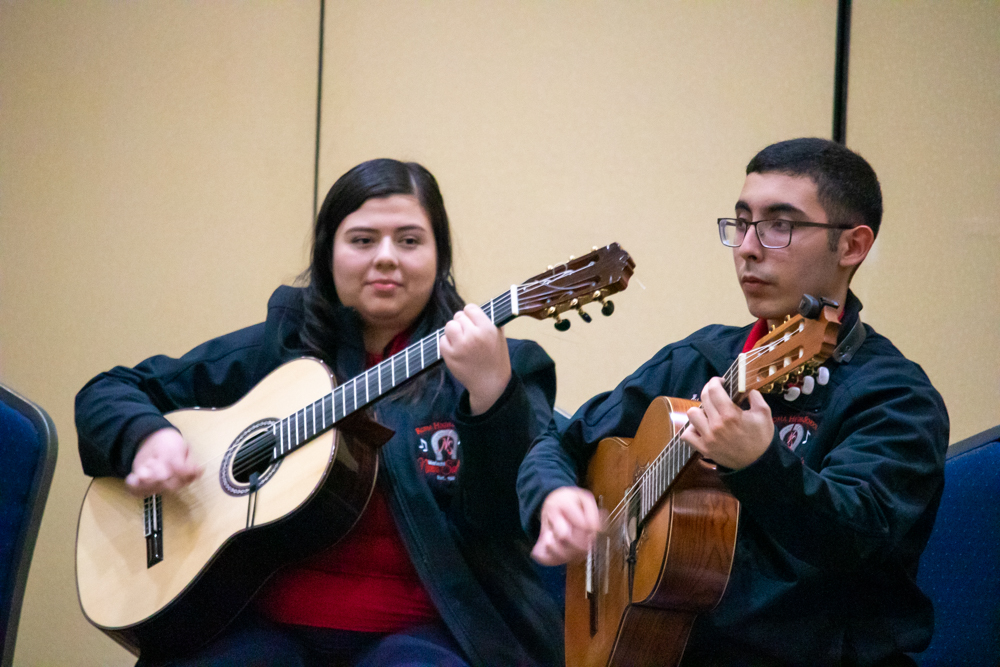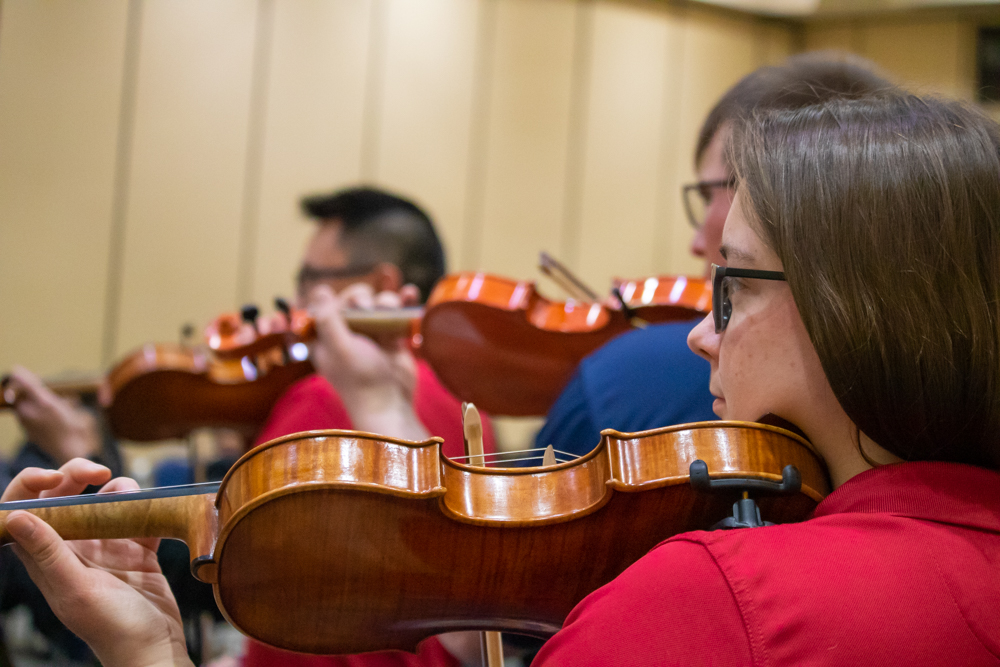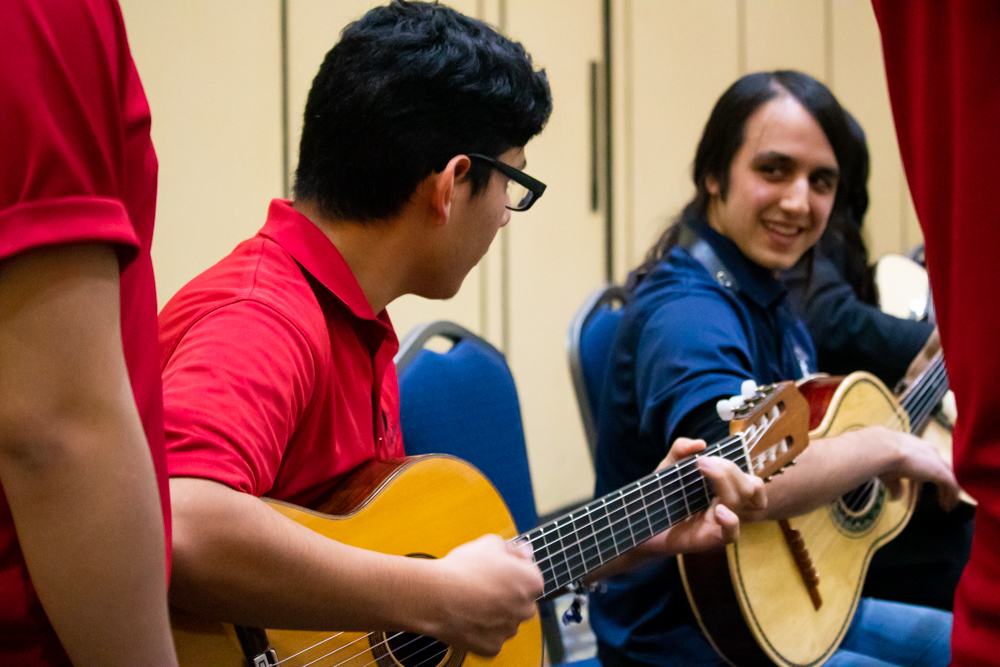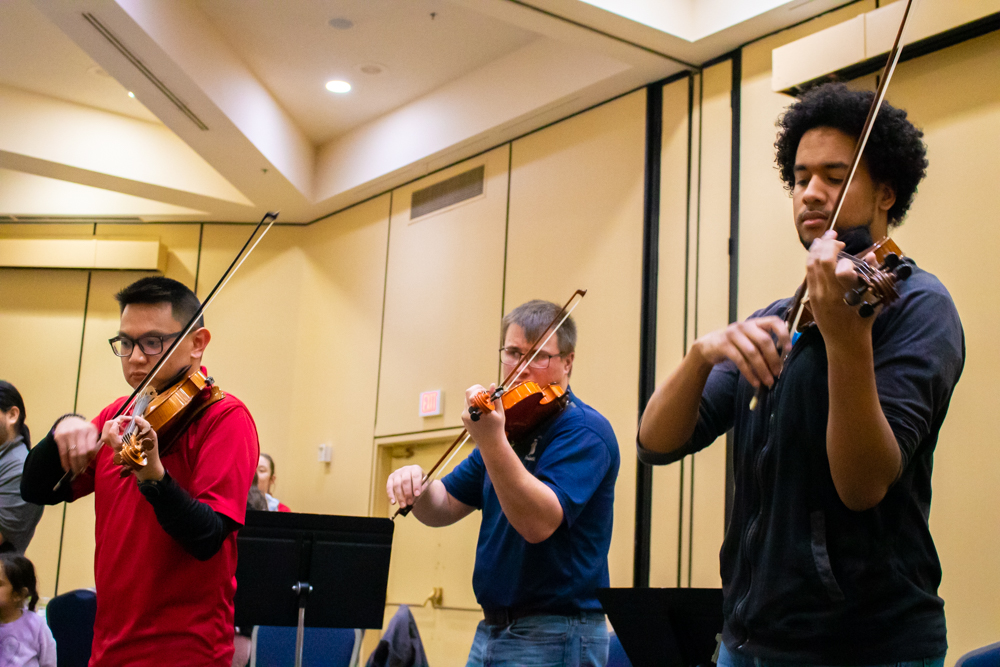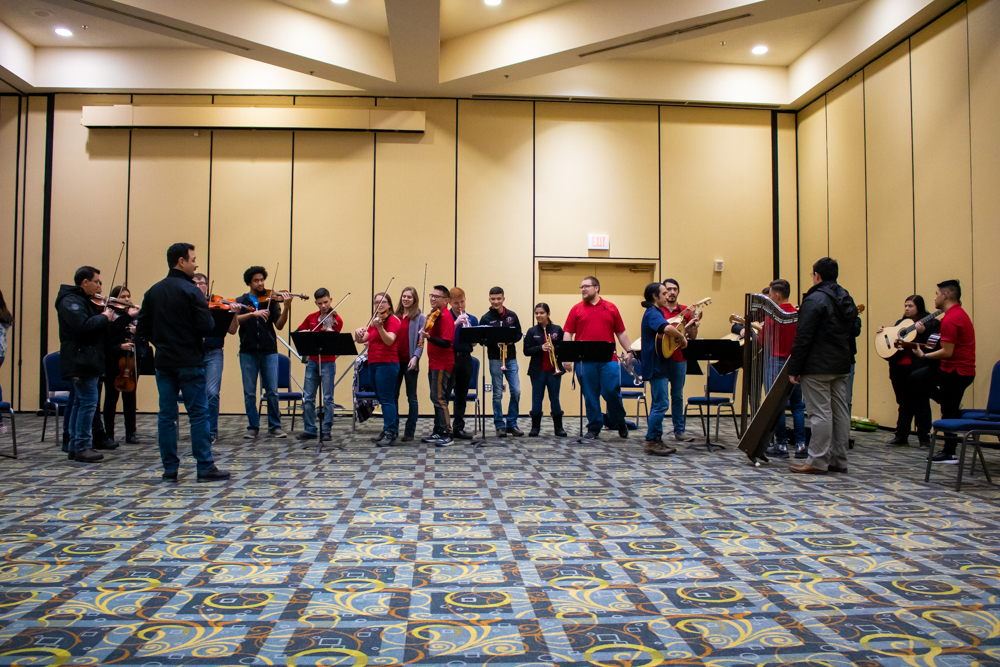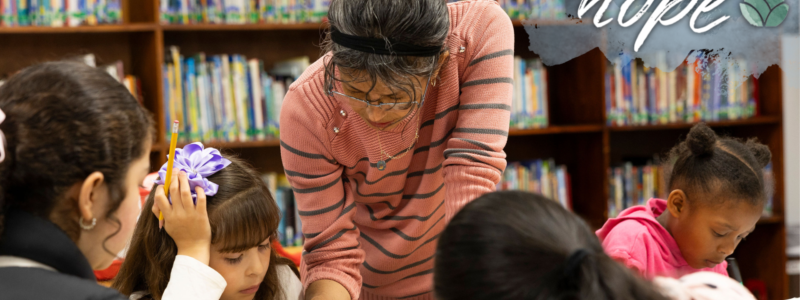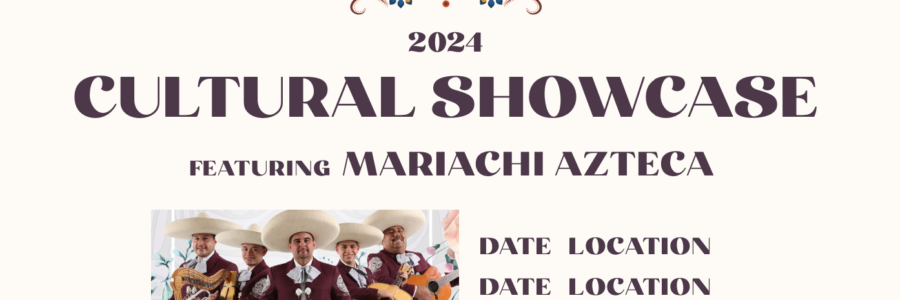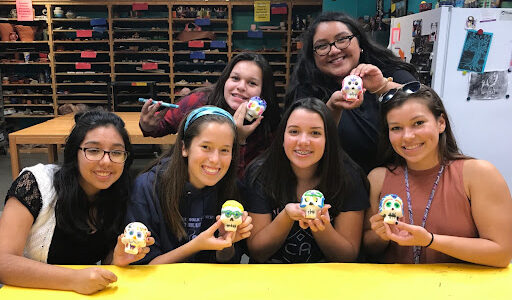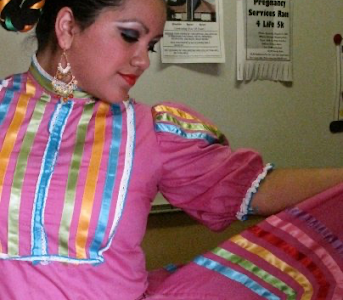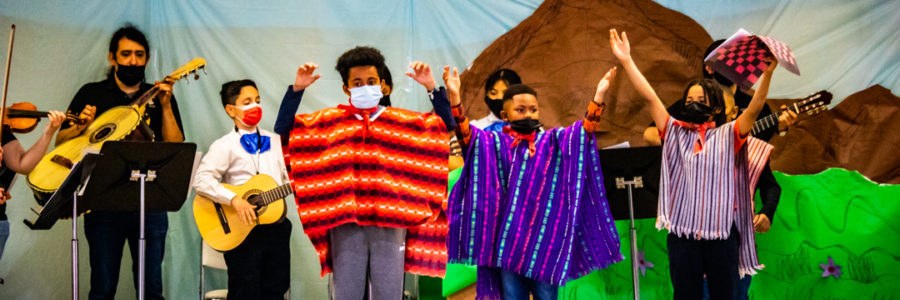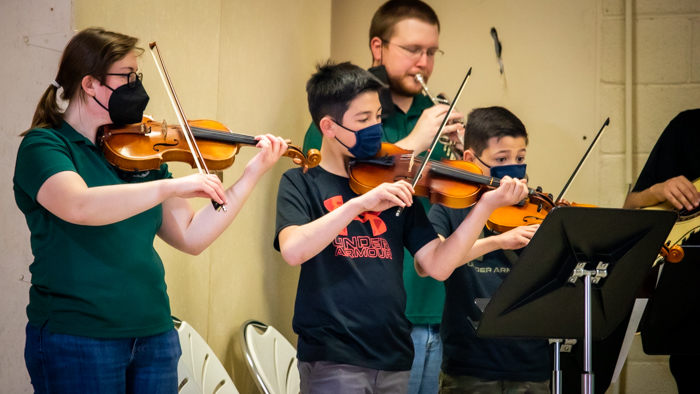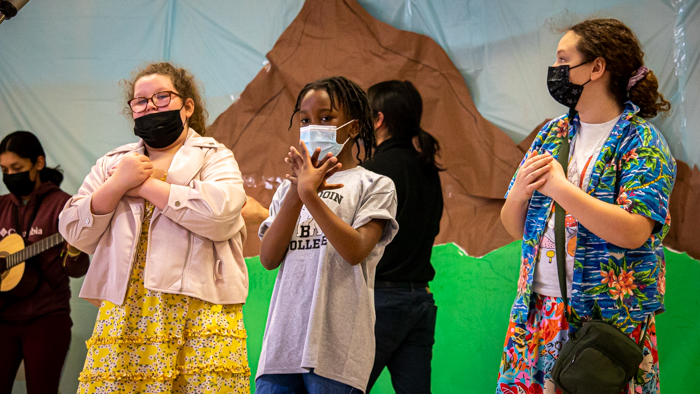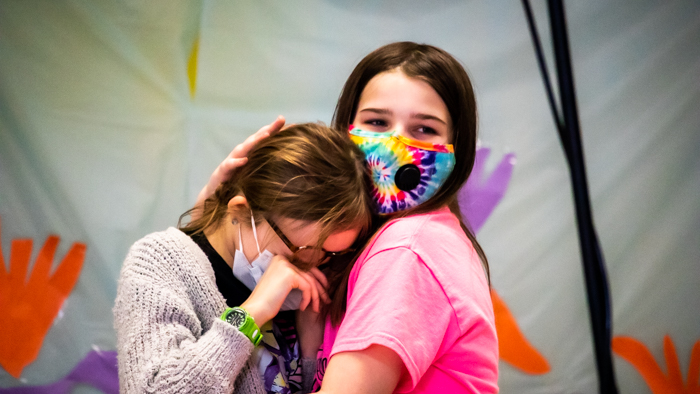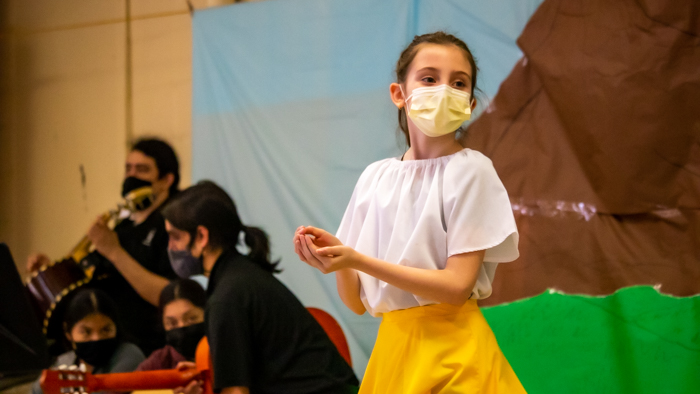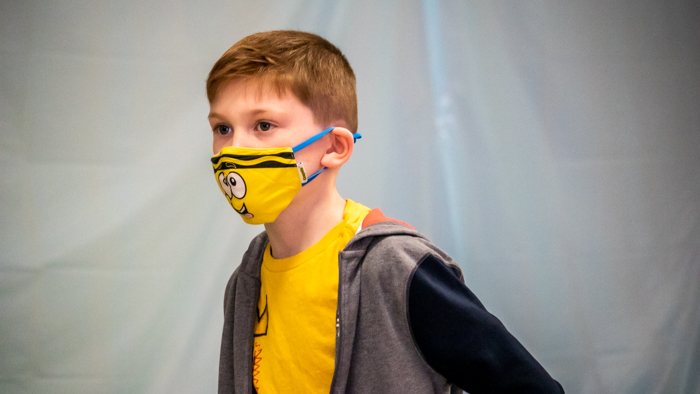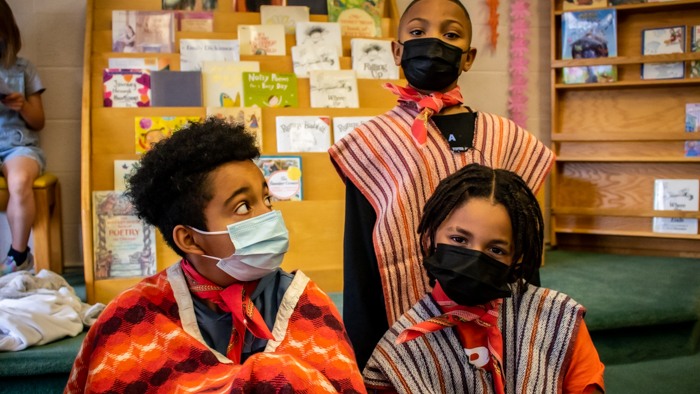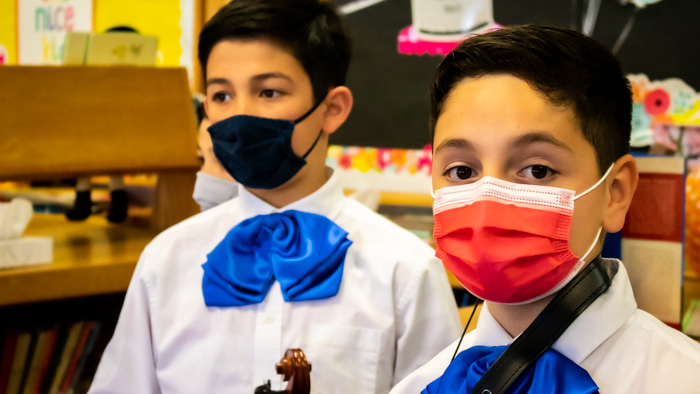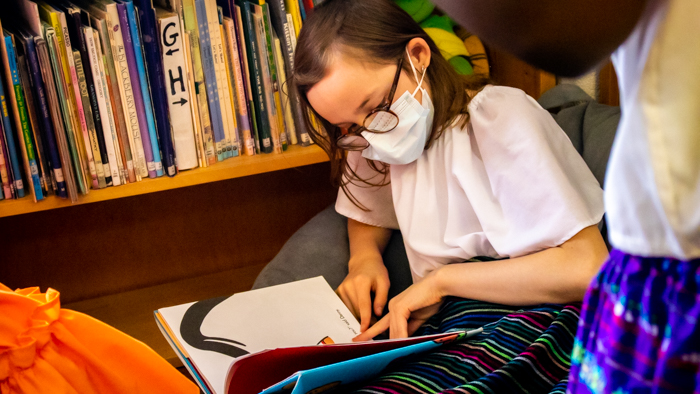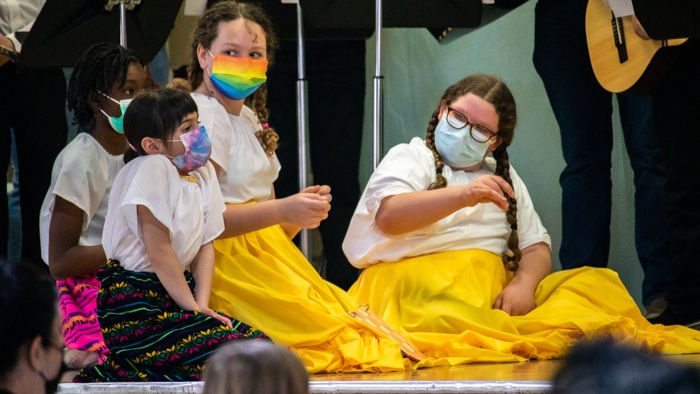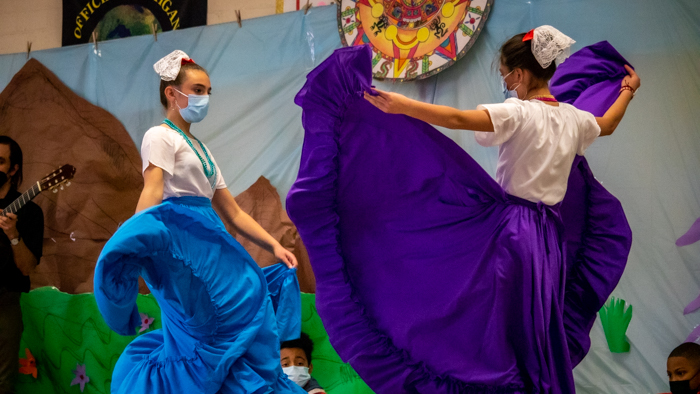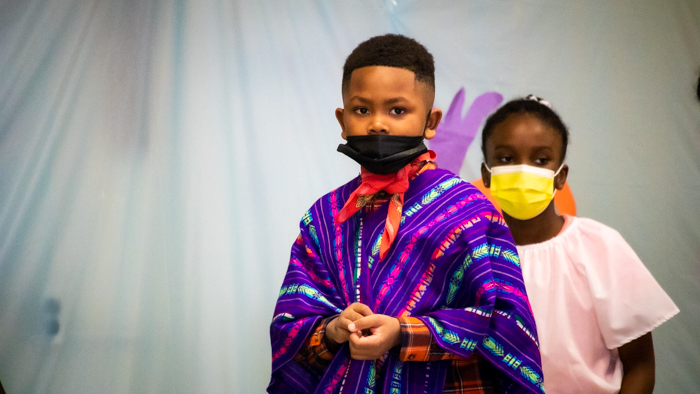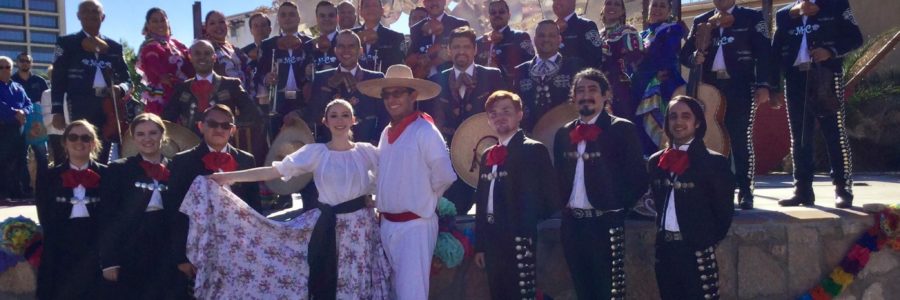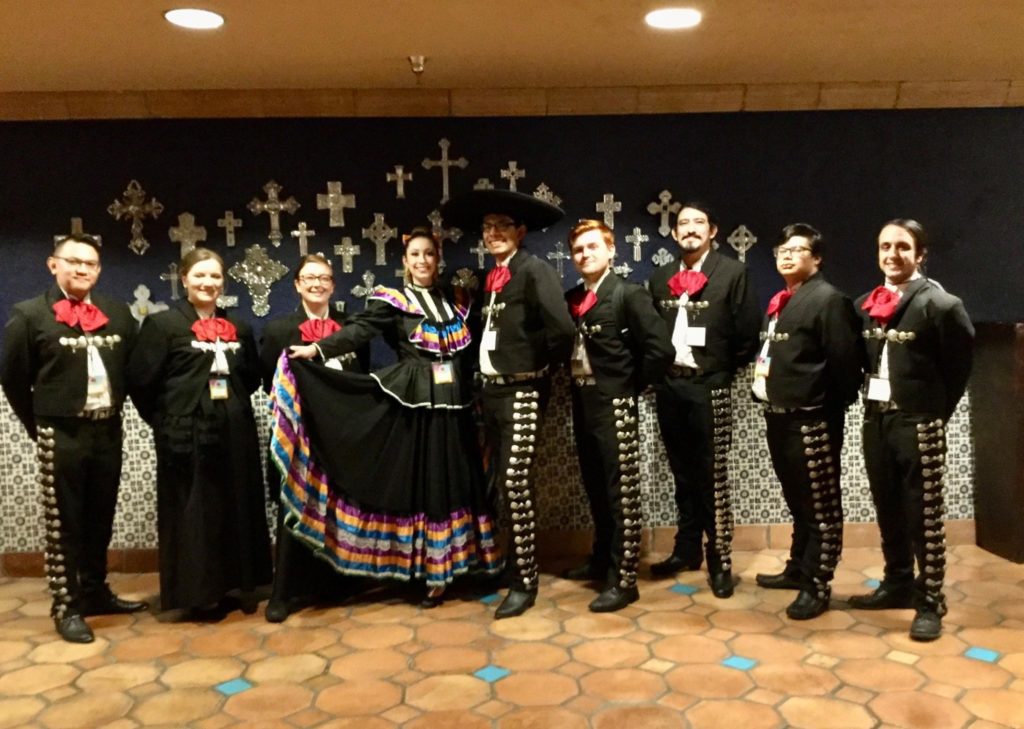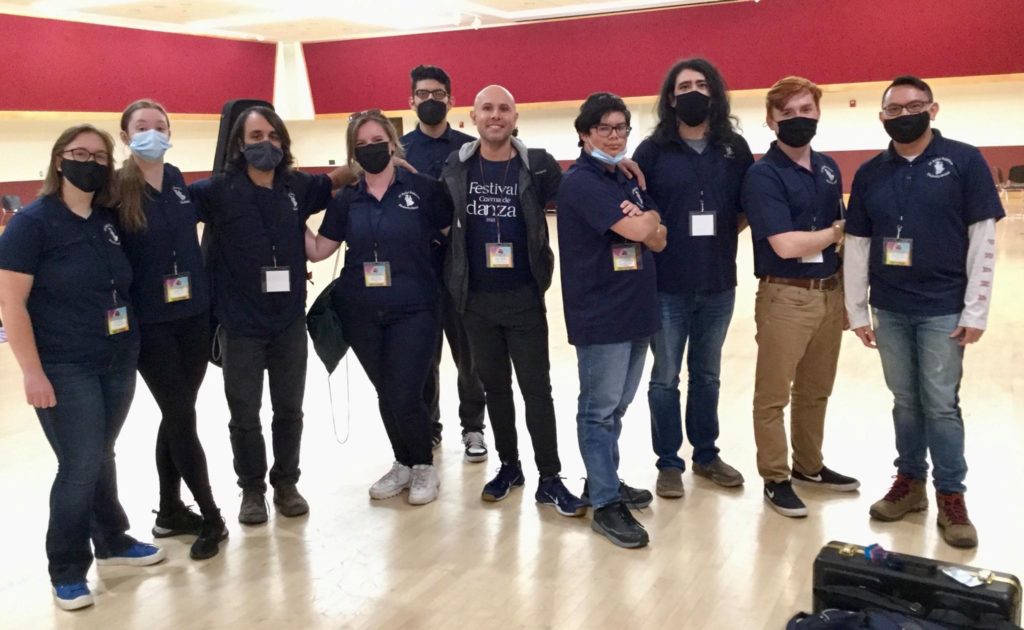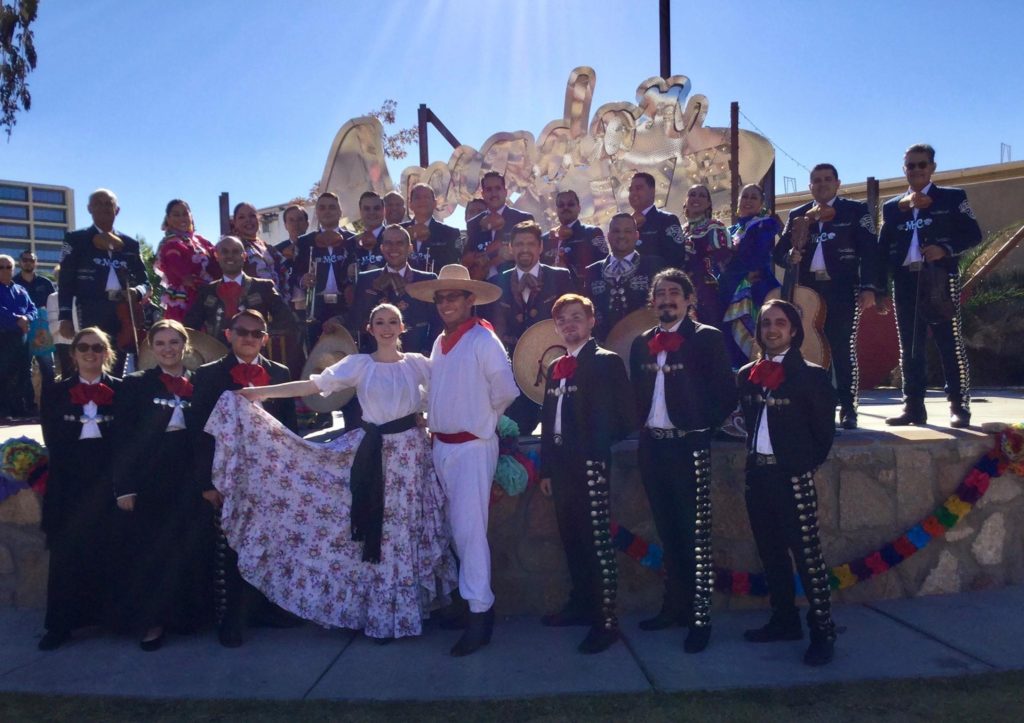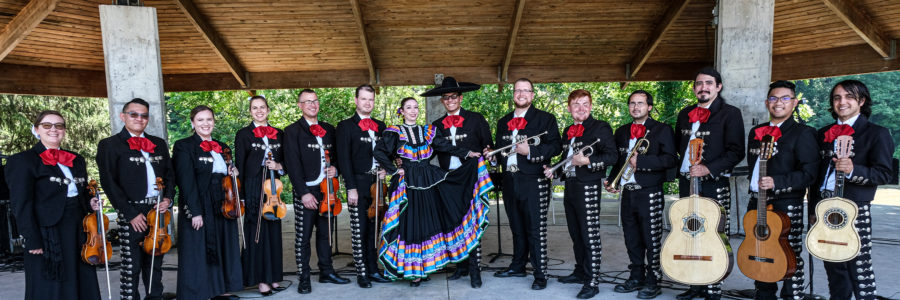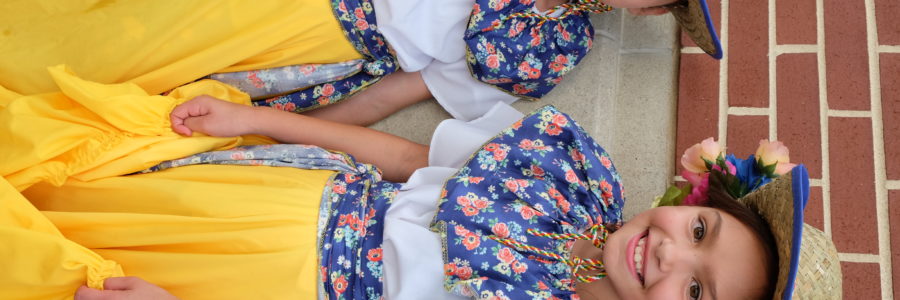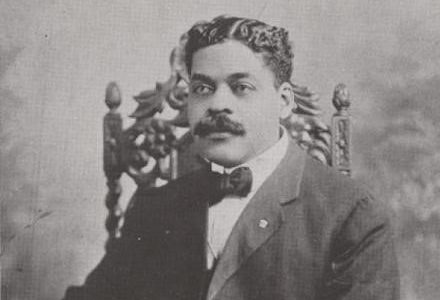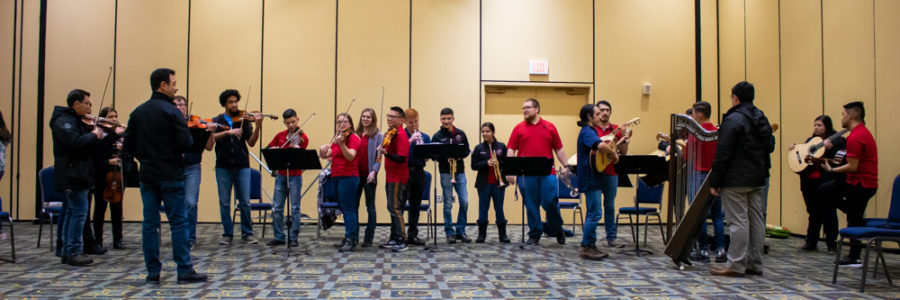Read the article about El Ballet Folklórico Estudiantil from the Community Foundation of Greater Flint below:
Category: Blog
Here is what is happening at EBFE.
EBFE’s Upcoming 2024 Cultural Showcase: Inaugural Tour
El Ballet Folklórico Estudiantil is very excited to announce that we are kicking off our performance season with the 2024 Cultural Showcase with Mariachi Azteca de América from San Antonio, TX! This is our first-ever Cultural Showcase, starting with concerts in Allendale, Saginaw, and Ann Arbor. At each show both musical groups will perform mariachi classics with folkloric dancers and special guest artists, Jonathan Palomar and Rhonda Garcia.
As many in Michigan and especially Genesee County know, EBFE is a non-profit organization based in Flint that is focused on preserving Mexican culture and enriching children’s lives through dance, music, and education. We have been the leaders in providing Hispanic cultural programs to Michigan for over 25 years. We are very excited to be partnering with Mariachi Azteca de América, an acclaimed mariachi group from San Antonio, TX! Their repertoire spans from covers to entirely original arrangements and compositions, winning the Mariachi Vargas Extravaganza Songwriting Competition in 2012. The group prides itself in mentoring and inspiring the upcoming generations to study Mariachi and we are thrilled to be working with them on this series.
This cultural arts showcase is the first of what we hope will be several collaborations with other cultural organizations throughout Michigan. Our goal with this series is to invigorate our youth mariachi & folkloric dance programs in Michigan and to build up a community of support for the arts. People from every age are welcome to attend and tickets are now available for purchase online at EBFEdance.org/2024-showcase. General admission is $32, students & seniors are $21, and children 12 years and under are $10 per ticket. Get your tickets before they run out and we’ll see you there!
Concert Dates:
- Friday, January 19th, 2024, 7 pm-9 pm, Grand Valley State University, Cook-Dewitt Auditorium
- Saturday, January 20th, 2024, 7 pm-9 pm, Saginaw Valley State University, Malcolm Field Theatre, Pre-Show at 6:40 featuring youth mariachi and dance ensembles
- Sunday, January 21st, 2024, 2 pm-4 pm, Washtenaw Community College Towsley Auditorium
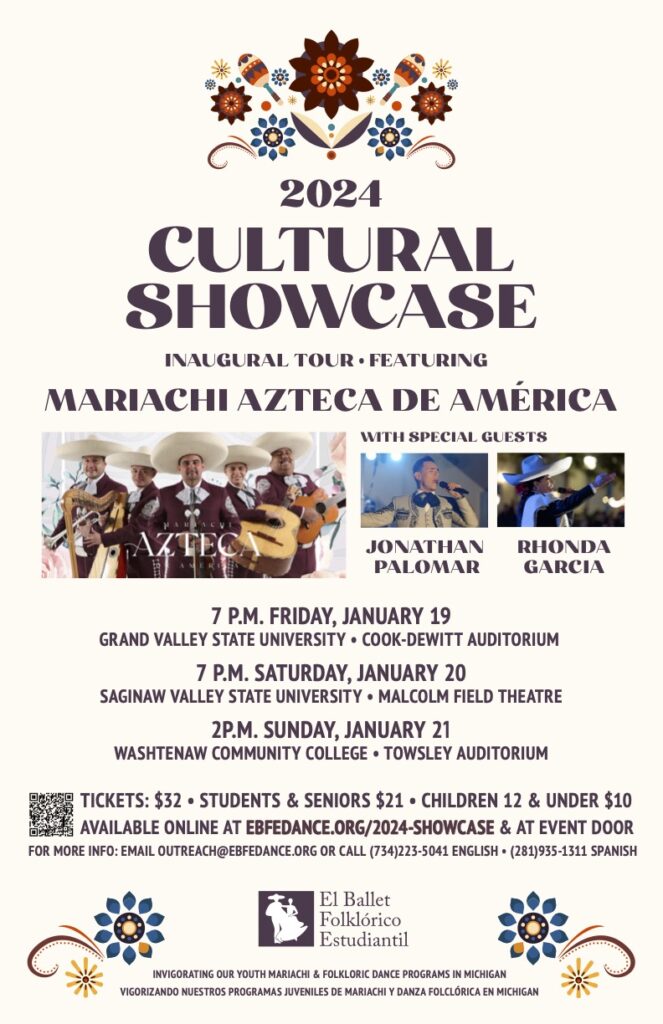
The Day of the Dead, El Dia de los Muertos
It’s October and El Día de los Muertos (The Day of the Dead) is fast approaching! This is a Mexican holiday where families welcome back the souls of their deceased relatives for a reunion that includes food, drink, and celebration. A blend of Mesoamerican ritual, European religion, and Spanish culture, this special holiday is celebrated each year from October 31st to November 2nd. According to tradition, at midnight on October 31, the lines between the living and dead are blurred and the spirits of children can rejoin their families for 24 hours. The spirits of adults can do the same on November 2. Even your pets can come back for a visit!
Not to be confused with Halloween, El Día de los Muertos is an ancient holiday dating back 3,000 years to pre-Columbian Mesoamerica. The Nahua people living in what is now central Mexico held rituals honoring their dead and family members provided food, water, and tools to aid the deceased. This inspired today’s tradition in which people build ‘ofrendas’ or altars honoring their loved ones at graves and/or within the home, made of their loved one’s favorite food, drink, pan de muerto, a special flower called “cempasuchil” to guide their loved ones on their journey, and many other items.
If you would like to help build a community ofrenda with us, please join us and the Latinx Technology Center at the Flint Institute of Arts (FIA) on November 1st from 5 pm-8 pm, with a performance from our mariachi and folklórico dancers at 7 pm. For updates on this event please see our EBFE Facebook page.
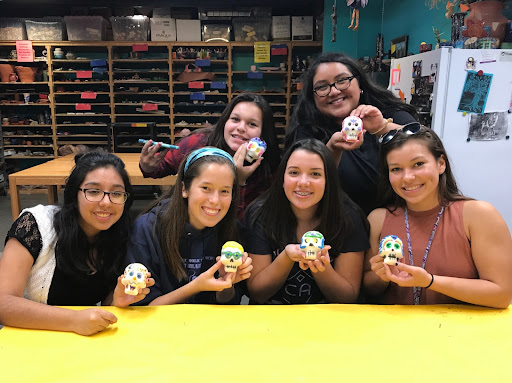
Latina League in 2018 at the Detroit Institute of Arts, making their own sugar skulls.
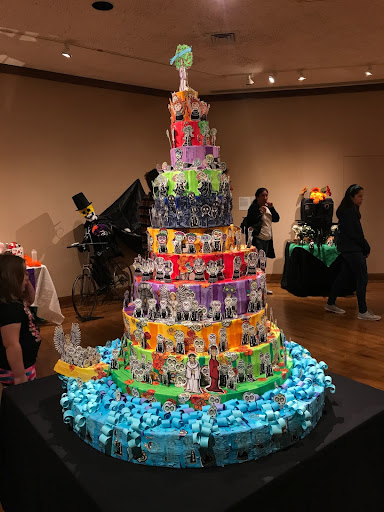
Ofrendas: Celebrating Día de Muertos installment at the Detroit Institute of Arts (2018).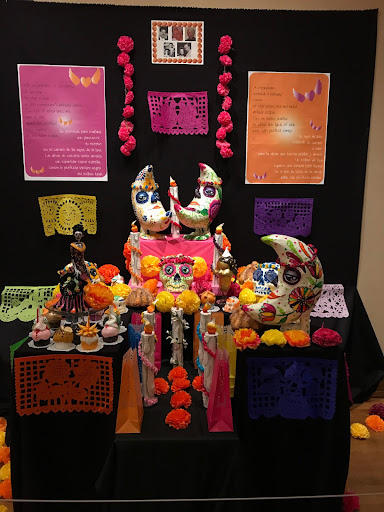
Ofrendas: Celebrating Día de Muertos installment at the Detroit Institute of Arts (2018).
Testimonial: “Being a part of EBFE has been transformative”
By: Alysia Treviño
My name is Alysia Treviño and I am Program Development Coordinator for El Ballet Folklórico Estudiantil (EBFE). Having grown up in Flint, I have been a part of the city’s Latino community all my life, but as a young child, I still longed to feel closer to my Mexican heritage. I started folkloric dancing with EBFE when I was 12 years old and this sparked a life-long passion for music, dance, and education, as well as a special closeness with my culture. This program is special because right away I started not only learning dances of Mexico, but also about Mexican traditions and holidays, music, and crafts. The program also started getting me prepared for academic success and I had my first college tour of UM-Flint at age 13 with my dance class! I later attended UM-Flint, studied abroad in Mexico, became vice president of Latino United for Success (LUNA), and graduated with the Maize and Blue Distinguished Scholar Award.
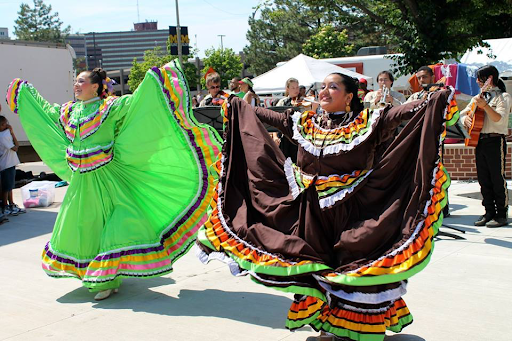
Alysia Treviño and Madelynn Guerra at the First Flint Hispanic Festival at the Flint Farmers Market in 2014.
As I got older, I began taking on leadership roles, as the organization likes to provide its students with the tools to be successful. Over the years I have taught dance classes, developed youth programming for young women, planned the Flint Hispanic Festival at the Farmer’s Market, and now I am delving into the role of Program Development Coordinator for the organization.
From the beginning, EBFE provided me with a comprehensive educational experience and gave me opportunities to gain unique experience that made me an attractive candidate for jobs, scholarships, opportunities at my university, etc. Aside from all of these wonderful benefits, on an emotional level, it has been transformative to know more about where my family comes from and play an active role in the preservation and celebration of my culture. It is for these reasons that I highly recommend dance, voice, and/or instrumental lessons for people of any age. There is absolutely no other experience like it!

Fiesta Mexicana performance in 2009 and TV promotion on NBC25 in 2016.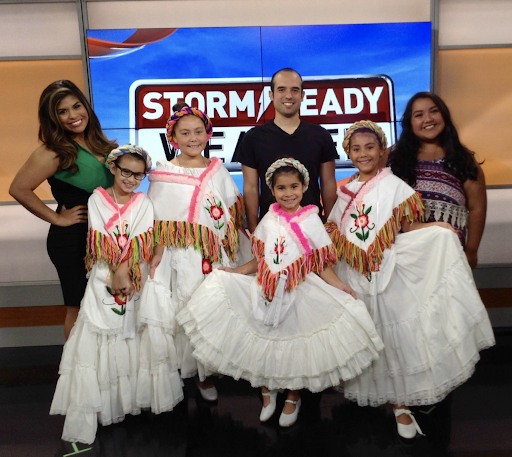
Fiesta Mexicana performance in 2009 and TV promotion on NBC25 in 2016.
Rainbow Weaver Student Musical
In ‘The Land of Enchantment’ – Attending the 2021 Las Cruces International Mariachi Conference
In ‘The Land of Enchantment’ – Attending the 2021 Las Cruces International Mariachi Conference
By: Gean Vincent Almendras
It was a wond8erful excursion , the few days we spent under the Las Cruces sun — the land of Enchantment. The time spent this week at the Las Cruces International Mariachi Conference was truly a worthwhile experience. Building relationships with various legendary Mariachi resources, seeking out Instruction in elevating our group’s playing style and ensemble skills under the direction of the prestigious group, Mariachi Cobre of Disney’s Epcot, and finding ways to improve and develop my own teaching of mariachi music to my own students; these were some of the many reasons for making the journey to this conference and why it was so important to attend.
I can say with certainty that the conference struck inspiration in each of the attendee’s hearts, especially my fellow EBFE participants who made the trek to Las Cruces with me. We arrived with open minds and not fully knowing what to expect, since this was the first Mariachi conference for many of us and and the few of us who had been here before hadn’t been here in quite some time. So it was definitely an event full of unfamiliarity to some degree for each of our group’s members. Nevertheless, we still left the conference awestruck by what we had witnessed and inspired and hopeful for the potential of EBFE’s future generations of students.
As a violinist, this conference seemed extra special to attend as Mariachi Cobre’s lead violinist, Joe Baca, held a rare masterclass in which he demonstrated methods that allowed students from backgrounds of both Mariachi and Classical music to excel at the practice of styles crucial to both schools of music. As a violin instructor myself, who caters to several students being taught Mariachi music styles through the classical methodologies, It was quite helpful to see the importance of needing material that suits students’ development of violin technique at the level of classical literature while giving them an encompassing understanding of how such techniques are applicable to the mariachi style; Joe Baca’s masterclass, along with violin sectionals throughout the week under the direction of the ever-wise Gama brothers, did just that. Now I feel that I can come back to my own students with a fresh perspective on how I can best convey the importance of developing classical technique while allowing them to understand how it applies to the style of Mariachi playing. Personally, this was one of the most important takeaways from attending this conference, in addition to working with such amazing and experienced Mariachi musicians of such a high technical caliber.
There were many unforgettable memories made, especially with this being my first mariachi conference; among them being the large ensemble rehearsals with over 300 mariachis and dancers performing together, and a culminating stage performance with Mariachi Cobre at the Pan-American Center in front of thousands of spectators. We also had nightly sessions where we jammed into the late hours with other Mariachis of various levels, from groups across the country and Mexico. I believe it was at these jam sessions that we truly found our inspiration to keep working on developing our own group’s repertoire and knowledge of Mariachi music. Of course, no EBFE excursion would be complete without an “EBFE moments” — when something unexpected happens for better or for worse — in this case, it was being coaxed by the conference into an impromptu stage performance! We had little preparation and barely time to rehearse. But even with the sparse EBFE mariachi ensemble and dancers we had present, because of our drive and our resilience, like always, we pulled it off without a hitch!
Overall, getting such an introspective look at how a great mariachi ensemble like Mariachi Cobre functions was really one of the top highlights and takeaways from the series of workshops at this conference. We were able to take a workshop session where participants could ask and dissect what made Cobre ‘tick’ in a sense, what helped them get where they are now, and how such knowledge could be applied to improving the quality of any Mariachi ensemble. From this, we learned of several systems and techniques we could utilize as an ensemble to tighten our sound and really achieve a higher level of playing in this style we all love so much. I know we all felt overwhelmingly inspired by what we learned at this conference, and we looked forward to how we can start to implement what we’ve learned.
I am so thankful for the opportunity to attend this conference, as well as for the knowledge I have attained while doing so. I lastly recognize the privilege I have for being able to attend while many others could not do the same. I can only hope that future generations of older EBFE students will have the same opportunity to bathe in the splendor of such a life changing event, and that I can be here to prepare them for it.
Cultural Exchange Concert
EBFE and the Philippine Arts & Culture Ensemble of Michigan (PACE-MI) held a cultural exchange concert in Flushing park on July 25th, 2021. This concert featured traditional folkloric dance from Mexico and Rondalla & Folk Dance from the Philippines.
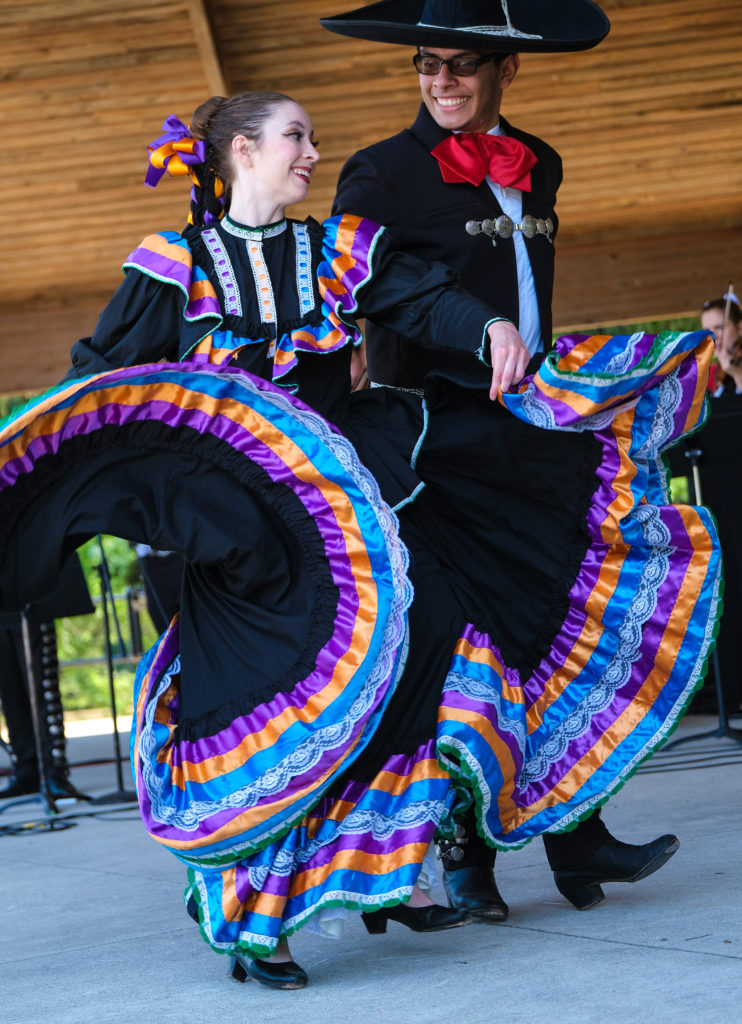

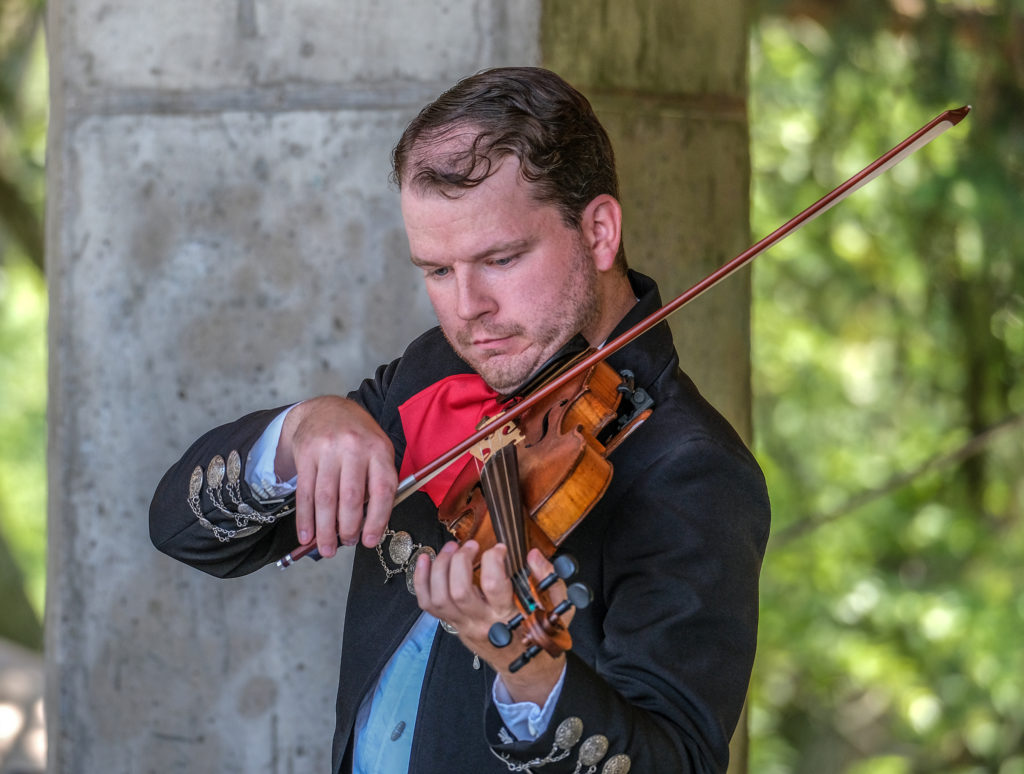
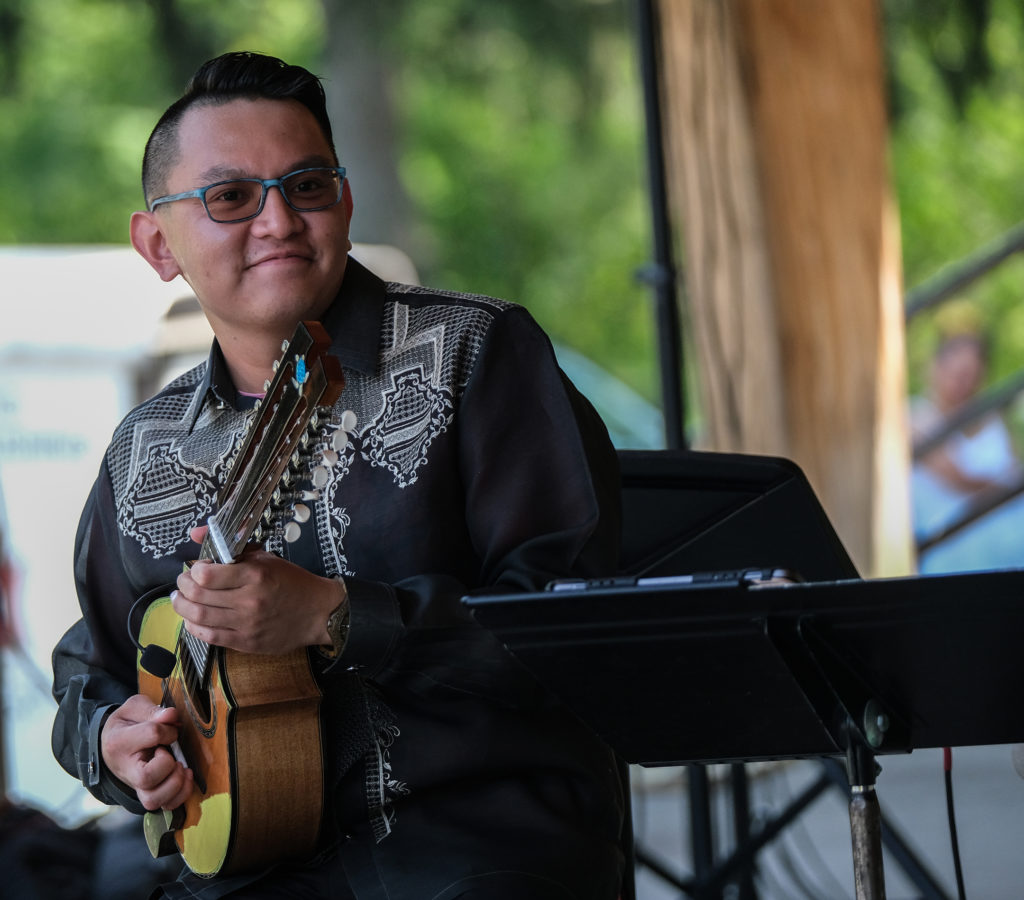

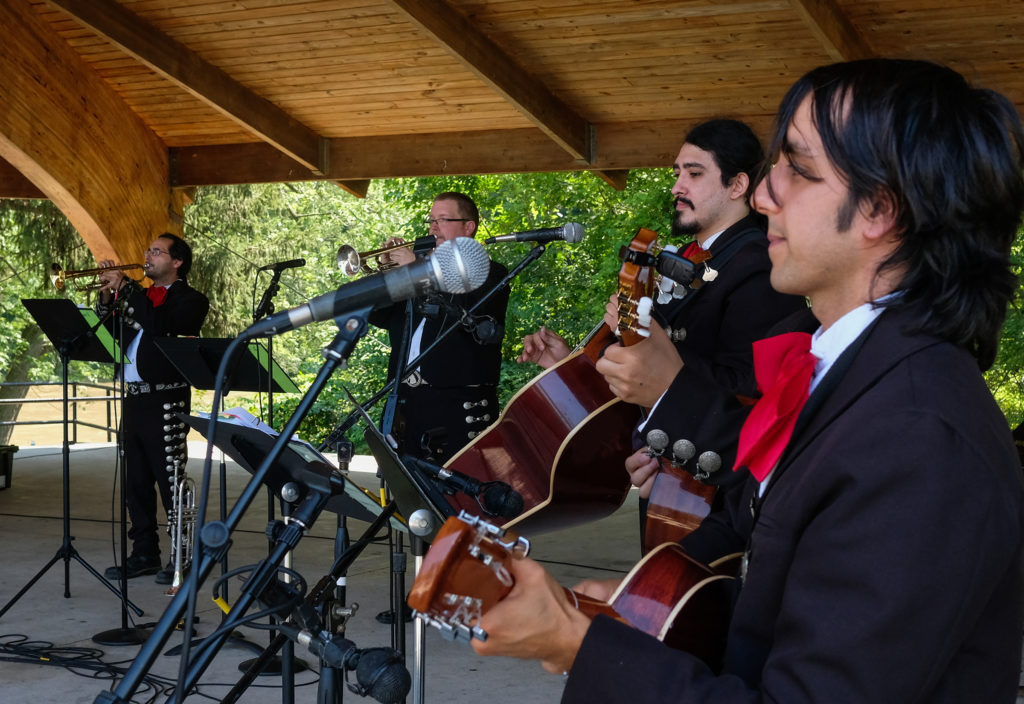
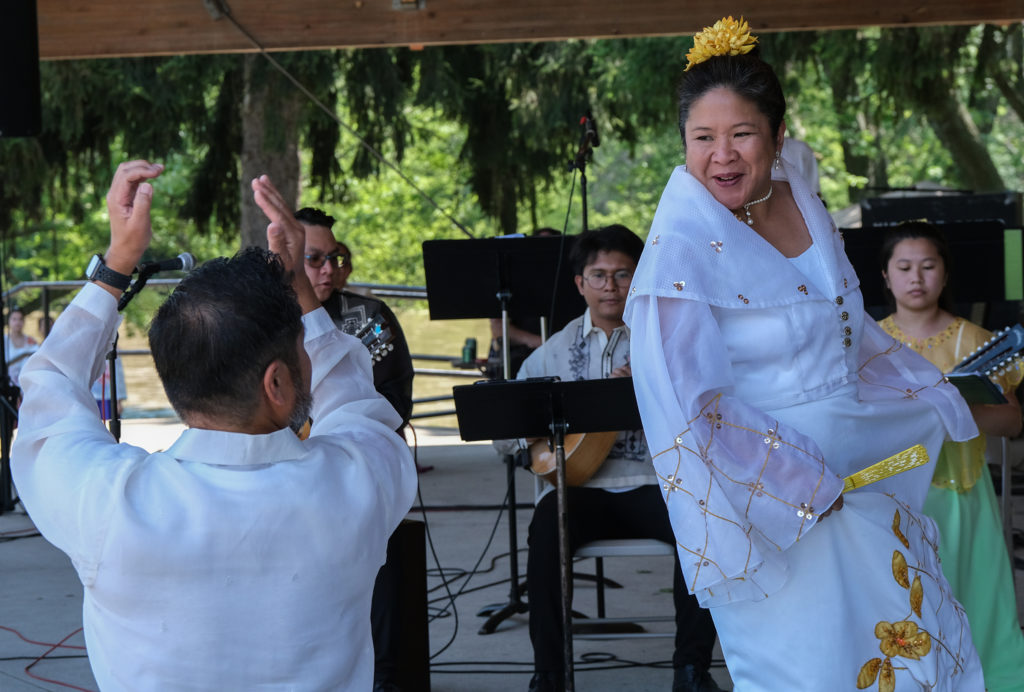
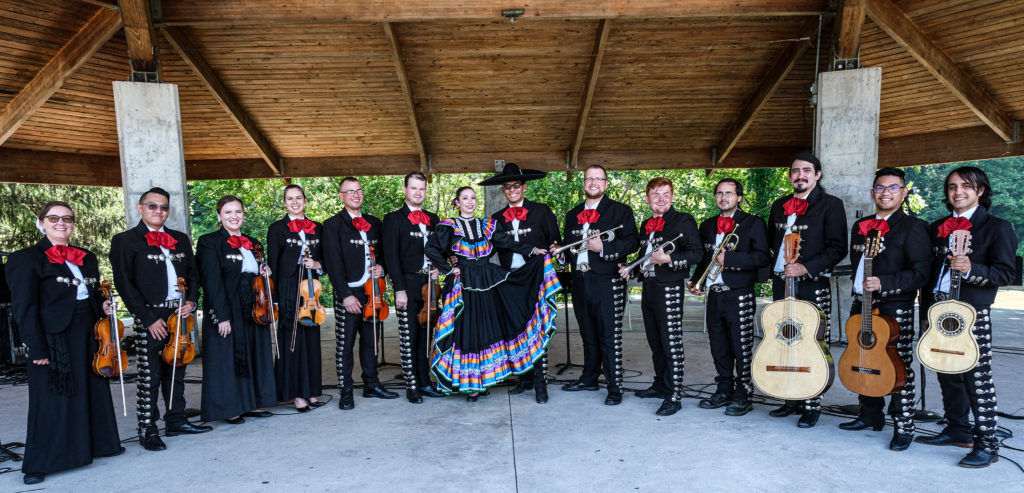
Flint Hispanic Festival 2019
We look back on last year’s Flint Hispanic Festival. Thank you for joining us each year. We look forward to our next event.
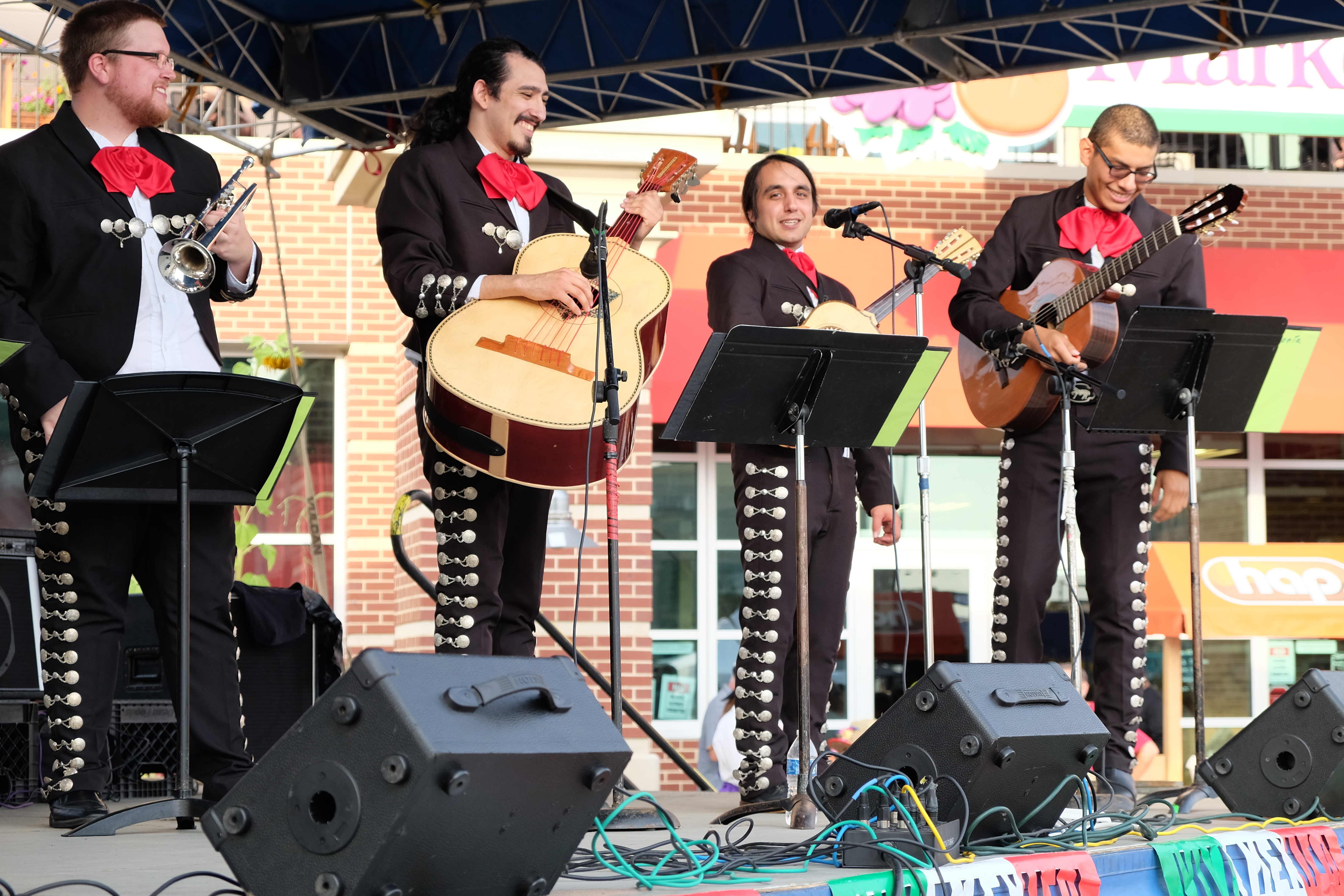
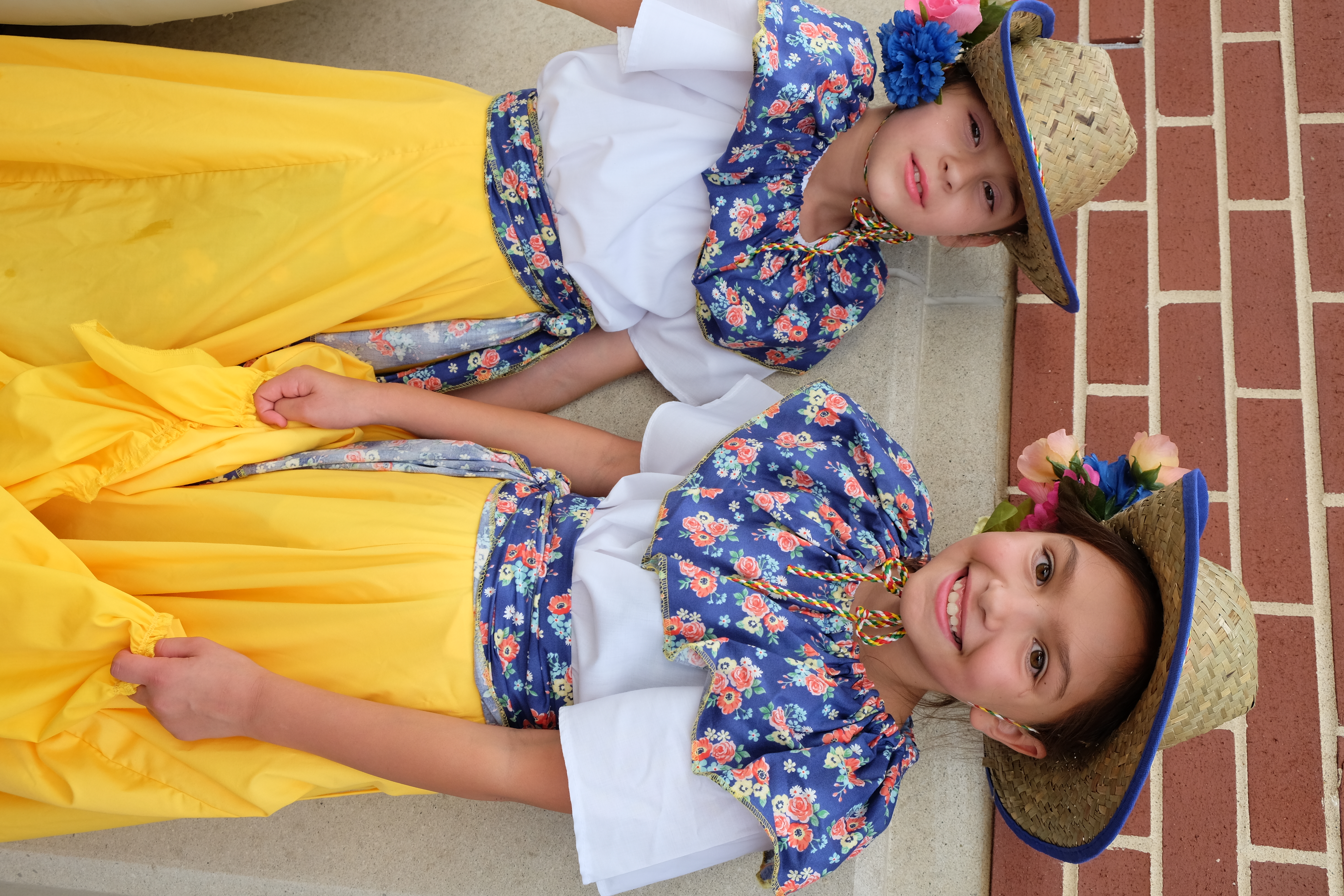
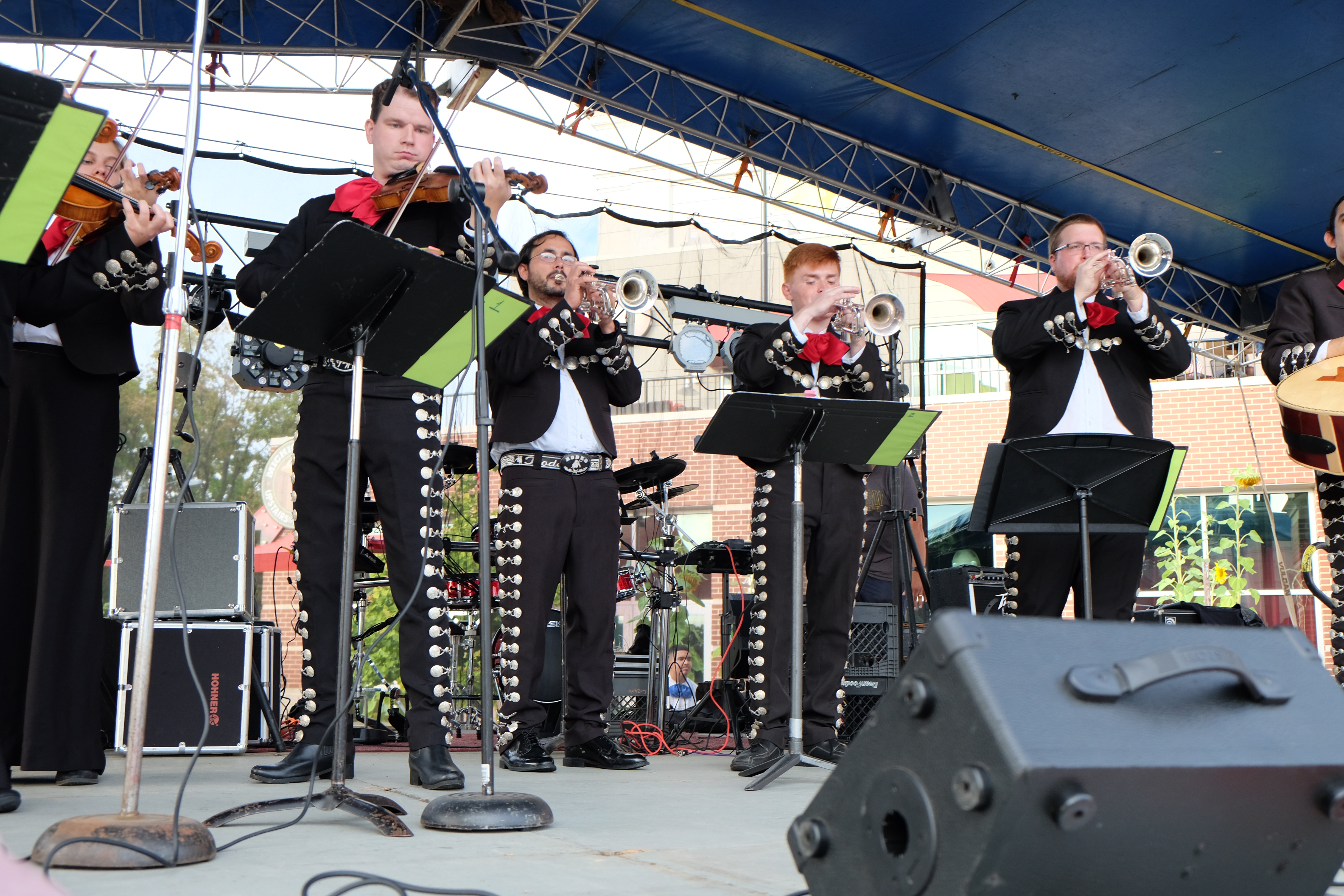
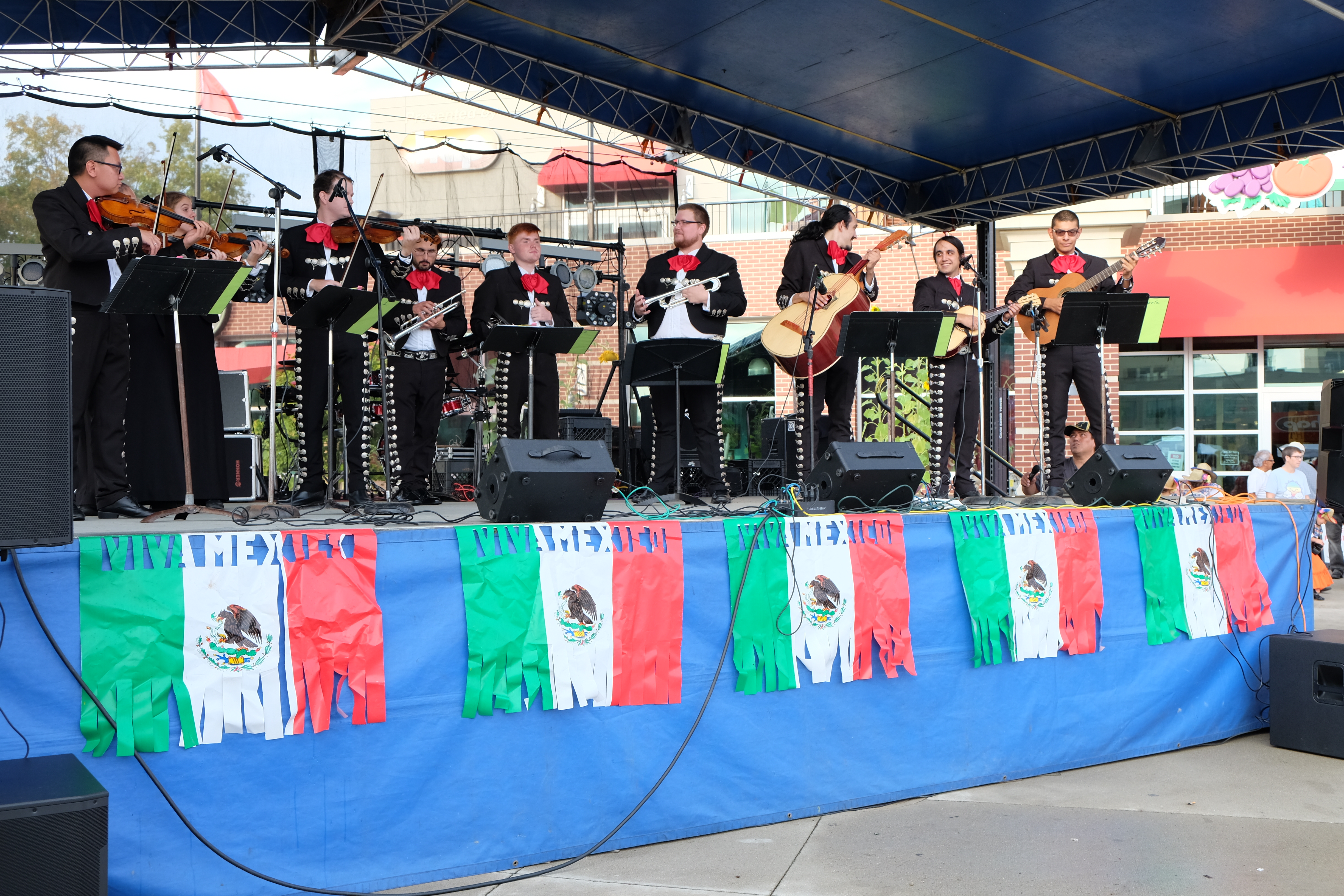
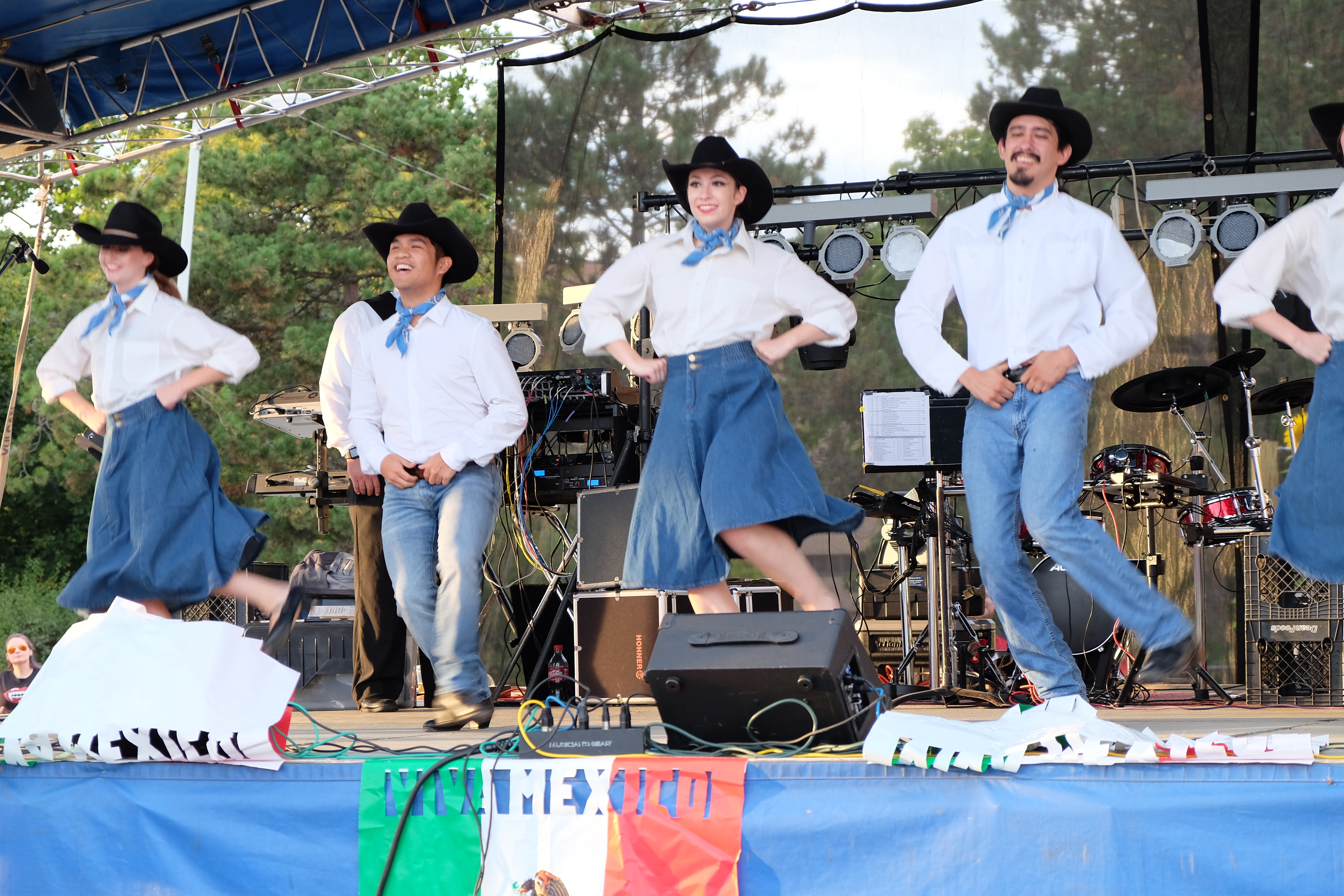
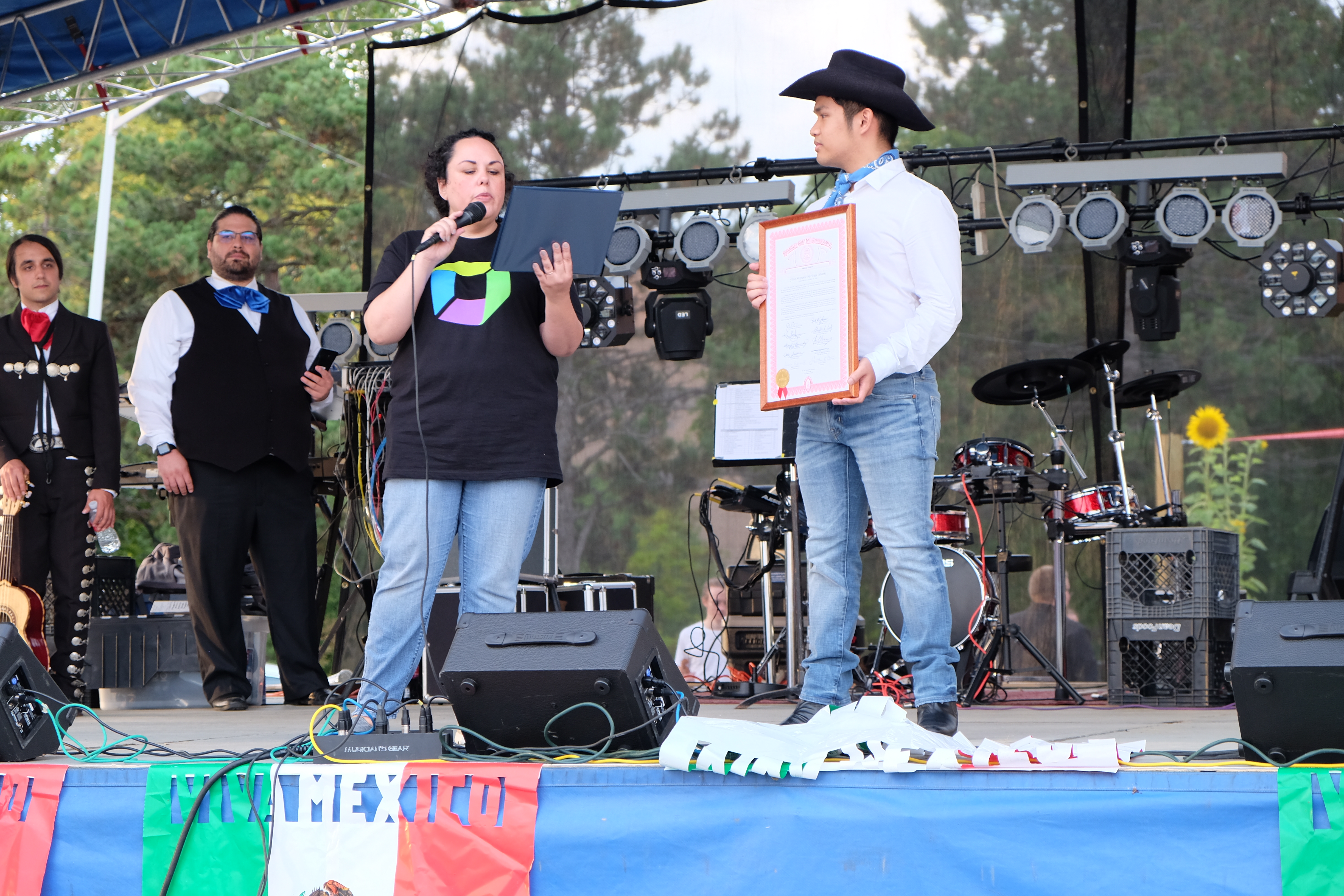

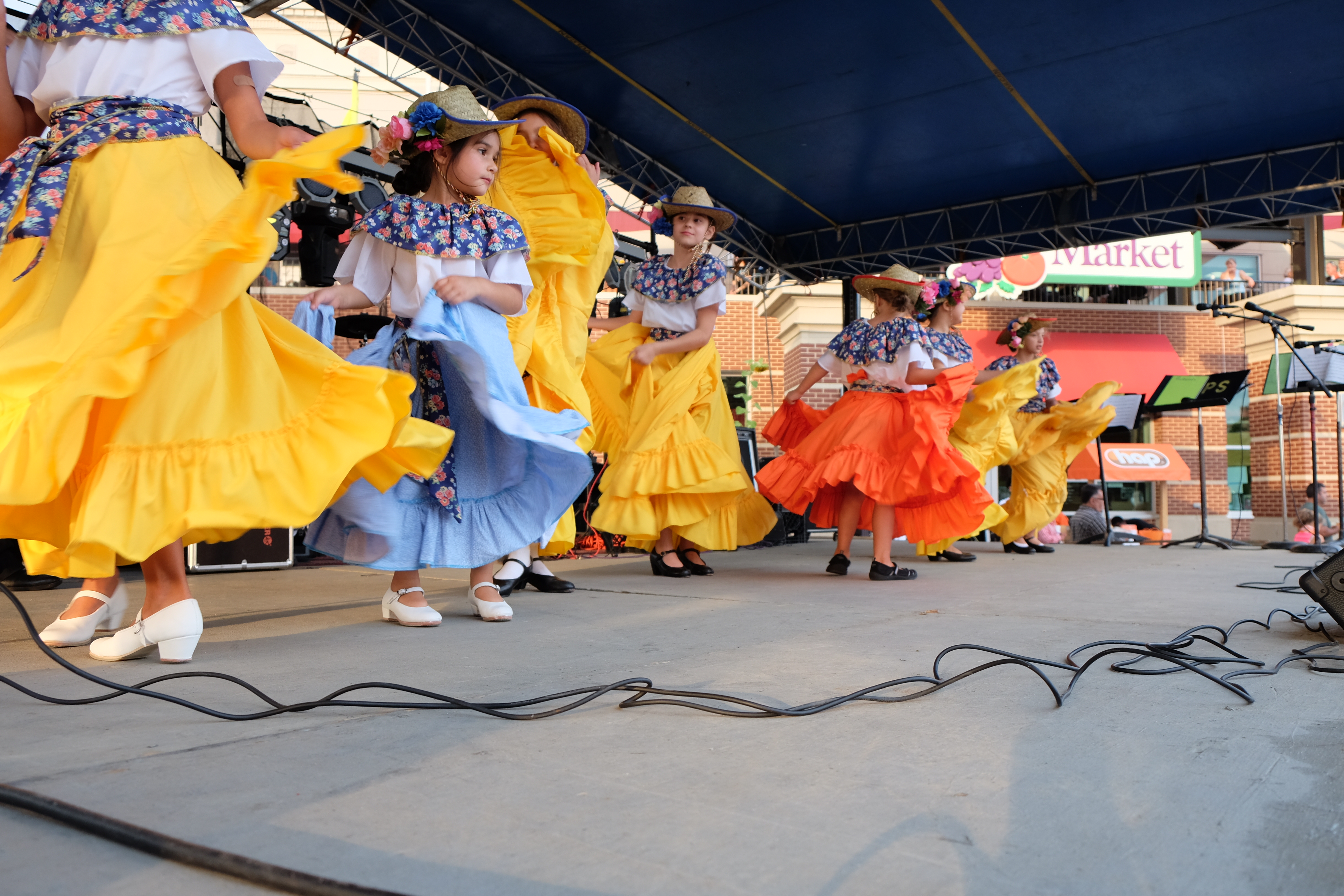
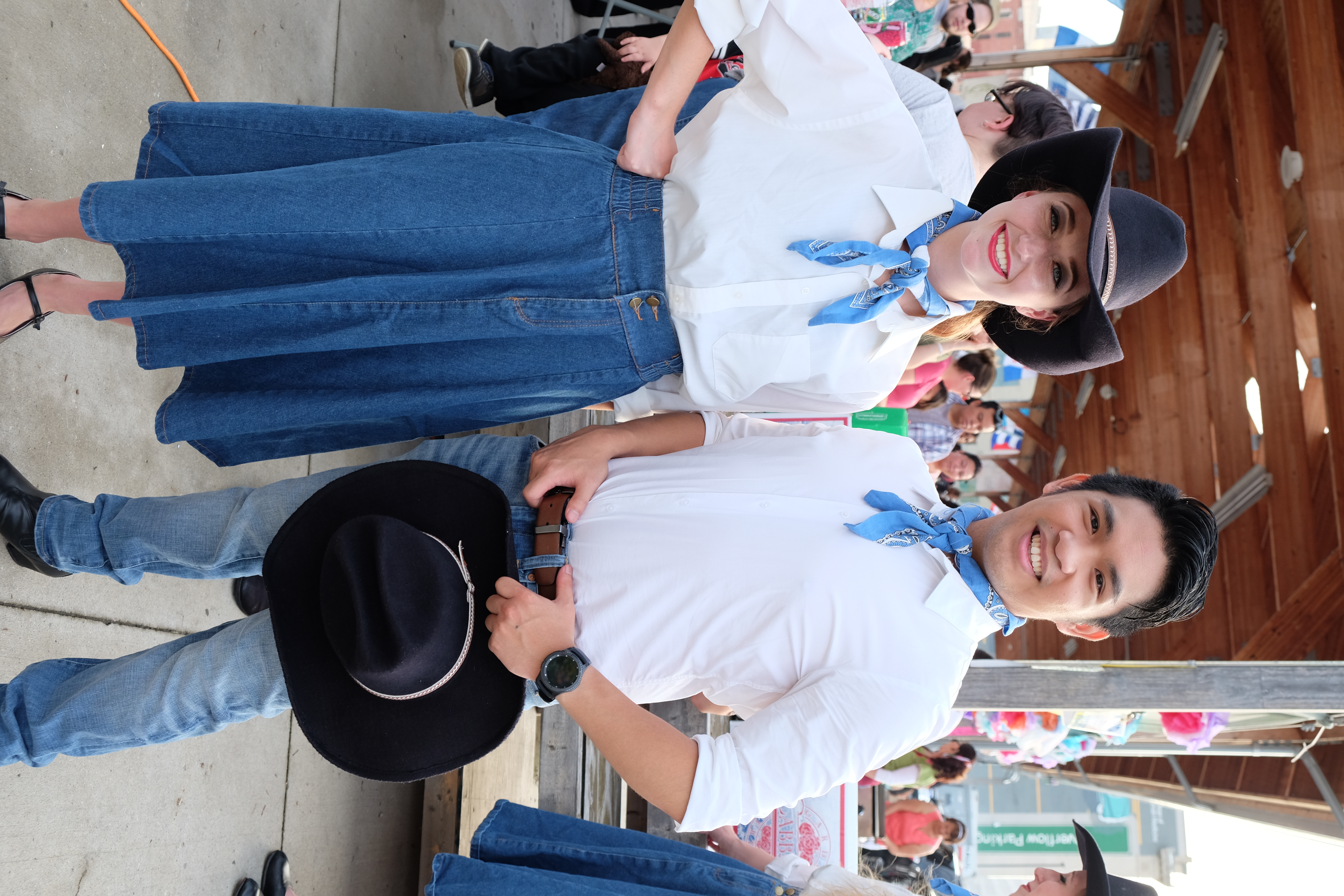
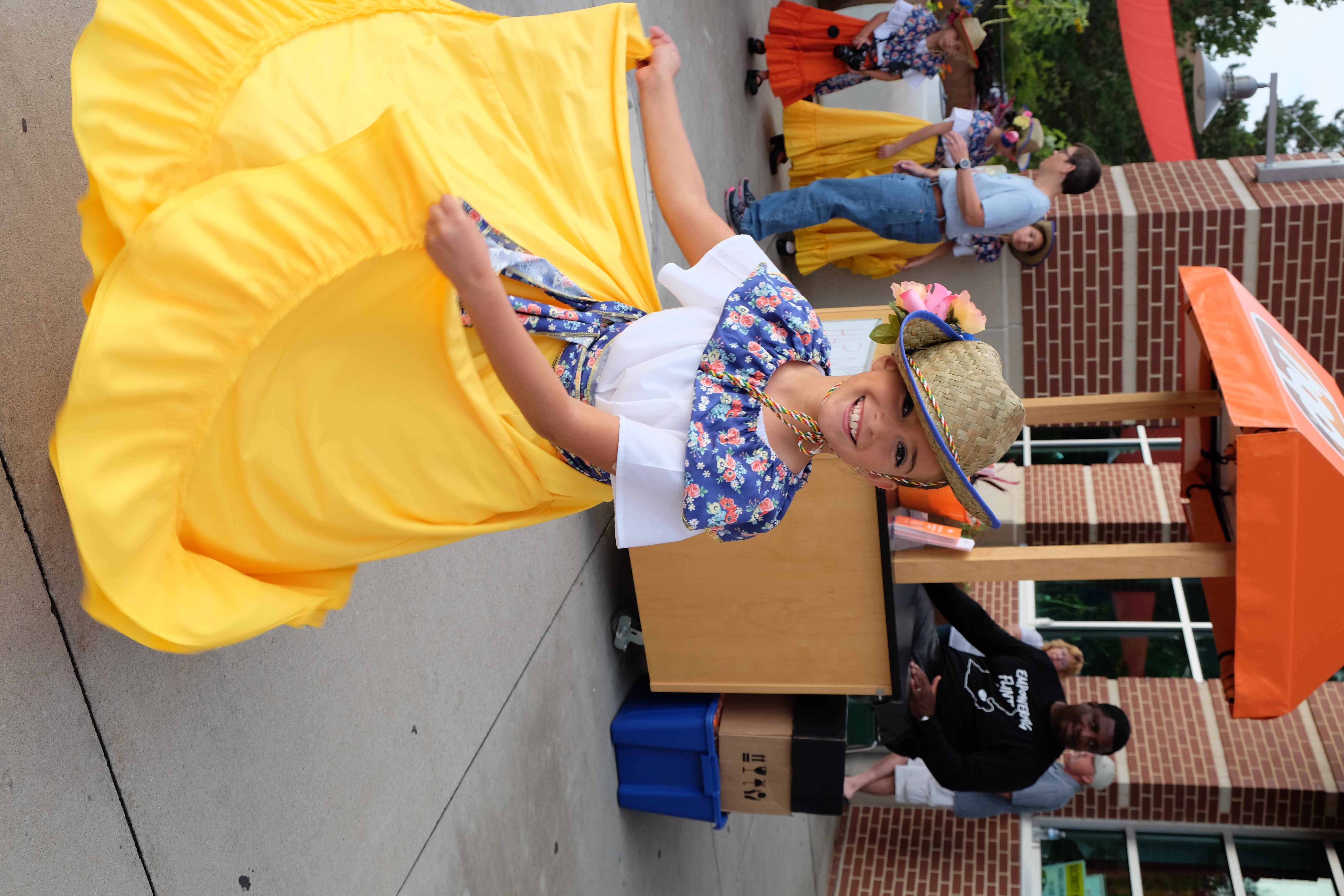
How have Hispanics contributed to Black History Month?
Meet Arturo Alfonso Schomburg
By Dr. Byrum Patrick
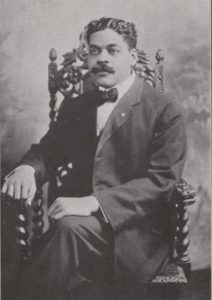 Arturo (Arthur) Schomburg (1874-1938) was born in 1874 in Santurce (now part of San Juan), Puerto Rico. His father was a businessman whose mother was from India and whose father was of German stock. Arturo’s mother, a midwife, was originally from St. Croix in the Virgin Islands and was of African descent.
Arturo (Arthur) Schomburg (1874-1938) was born in 1874 in Santurce (now part of San Juan), Puerto Rico. His father was a businessman whose mother was from India and whose father was of German stock. Arturo’s mother, a midwife, was originally from St. Croix in the Virgin Islands and was of African descent.
As a child he would read to workers rolling cigars in a factory to help them pass the time. He developed a keen interest in the novels, news reports and political discussions that he would read to them. When he was in the fifth grade, his teacher told him that blacks had no history, heroes, or accomplishments. This only proved to be a challenge to him and from this moment on he vowed to “track like a bloodhound” to find the lost history of Africans, both on their own continent and in the diaspora.
He was educated in commercial printing in Puerto Rico and then studied Negro literature at St.
Thomas College in Danish ruled Virgin Islands. With letters of recommendations from the
tobacco businessmen and the owner of a print shop where he had worked, at age 17 he moved
to the Harlem section of New York. While continuing to study African and Afro-American
history, he eventually taught Spanish, worked as a messenger for a legal firm, and later became
supervisor of the messaging department of Bankers Trust Company.
During this time, Arturo became very involved in the independence movements for Cuba and
Puerto Rico (from Spain) and co-founded Los dos Antillas dedicated to this purpose. When the
islands became possessions of the United States after the Spanish-American War in 1898, these
groups dissolved.
In the United States Arturo, who called himself Afro-Puerto Rican, found that he was not
initially accepted by American blacks, who to this point did not have a lot of experience with
Latino immigrants. At the same time he experienced the white racism that they were suffering
under, too.
He decided to ignore the differences and to concentrate on the global history that they both
shared. He began what became extensive research on this subject, collecting documents,
getting oral histories, and writing scholarly articles himself. His first published article was “Is
Hayti Decadent?” in 1904. In 1909 he published Placido, A Cuban Martyr, a short pamphlet
about a Cuban poet and independence fighter.
Arturo believed that through education and learning their history, African-Americans would be
better able to advance socially and economically. He knew that the official history taught was
white-washed and ignored the contributions of those of African descent by not mentioning
them. In 1911 he co-founded, with John Edward Bruce, the Negro Society for Historical
Research, which for the first time brought together African, West Indian and Afro- American
scholars. He joined the exclusive American Negro Academy in 1914 and served as its fifth and
last president from 1920 to 1928. Founded in 1897, its purpose was to refute racist scholarship
and publish the history and sociology of African-American life, while also promoting black
claims to individual, social, and political equality.
Arturo played an important role in the Harlem Renaissance, a flowering of intellectual, political
and artistic movements brought about by the concentration of blacks in Harlem from across the
United States and the Caribbean. This peaked in the 1920s and during this time Schomburg
published his influential and widely distributed essay “The Negro Digs Up His Past”. His
collection of books, manuscripts, slave narratives, artwork and other artifacts eventually
became so massive that it outgrew the space in the apartment that he and his wife shared. In
1926 the Carnegie Corporation purchased it for $10,000 and donated it to the New York Public
Library. The library appointed him the curator of the collection titled the Schomburg Collection
of Negro Literature and Art (later renamed the Arthur Schomburg Center for Research in Black
Culture). Arturo used the money he received to travel to Spain, France, Germany, and England
to seek out more pieces of black history to add to his collection. In the early 1930s, while
serving as Curator of the Negro Collection at Fisk University in Nashville, he traveled to Cuba to
meet with artists and writers and add yet more to his collection.
Schomburg died of complications from dental surgery in 1938. In 2002 scholar Molefi Kete
Asante named him on his list of the 100 Greatest African Americans.
Jam Session with Mariachi Nuevo Santander
The awarding-winning performance group from Roma High School in Roma Texas performs with El Ballet Folklórico Estudiantil mariachi.
